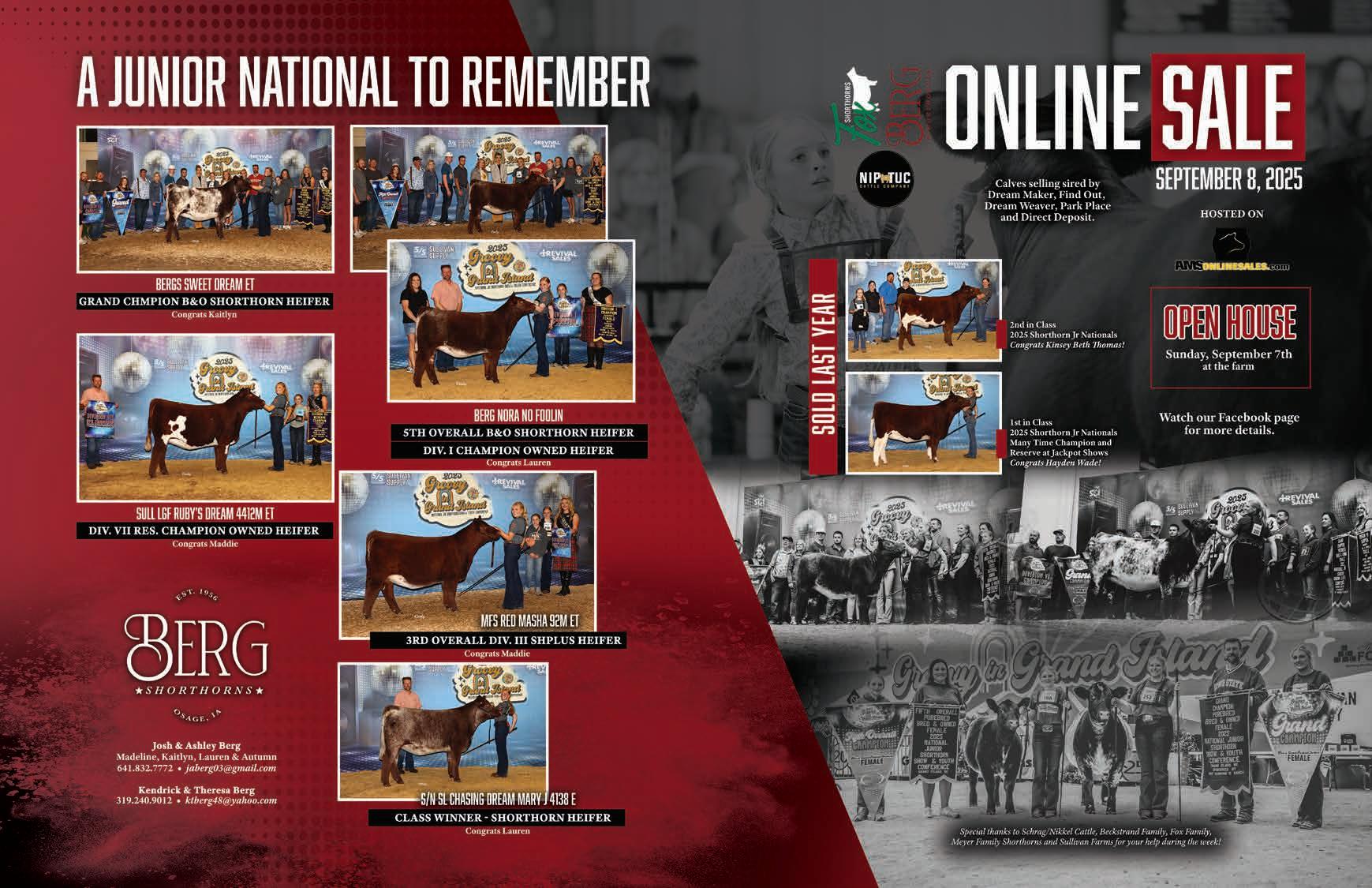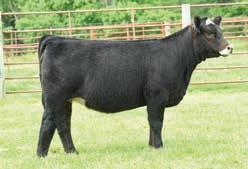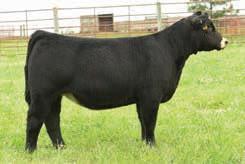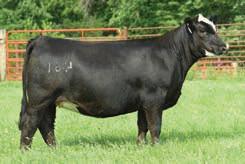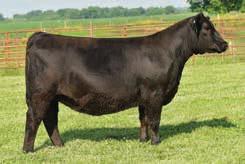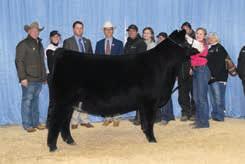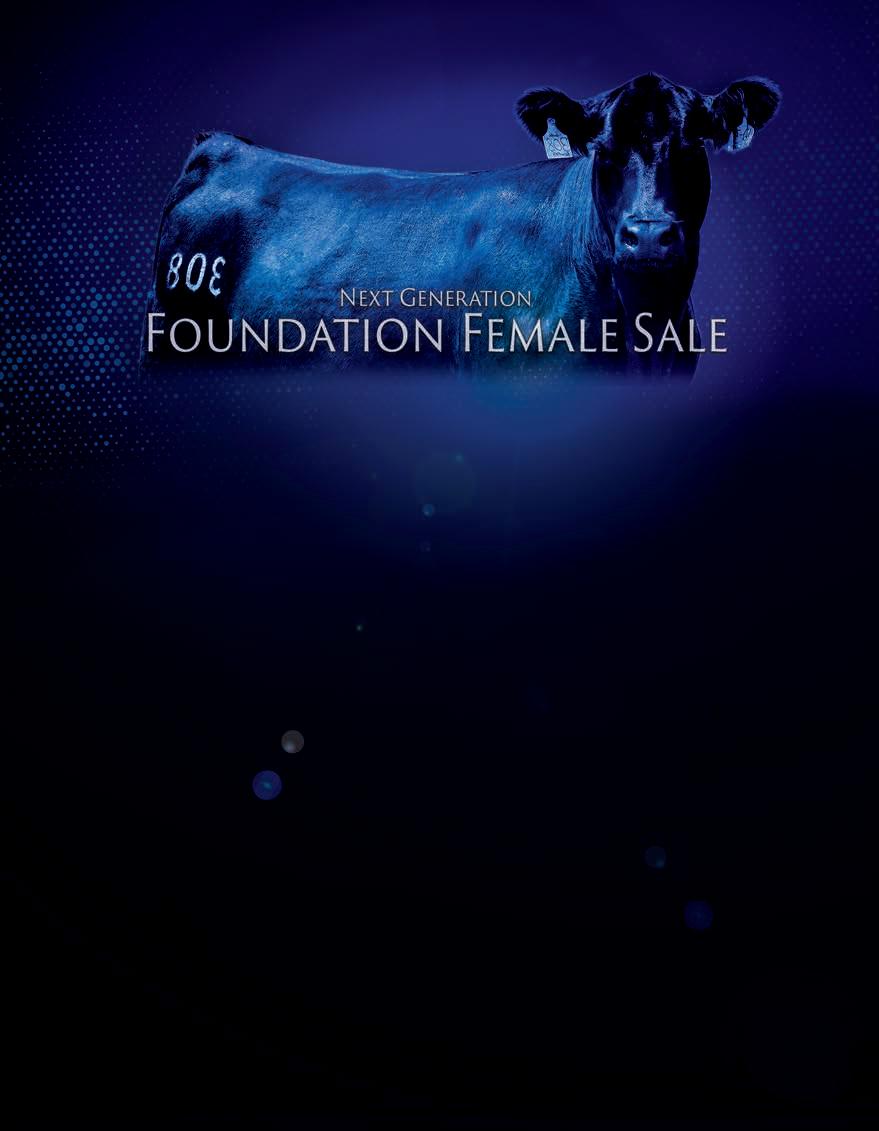
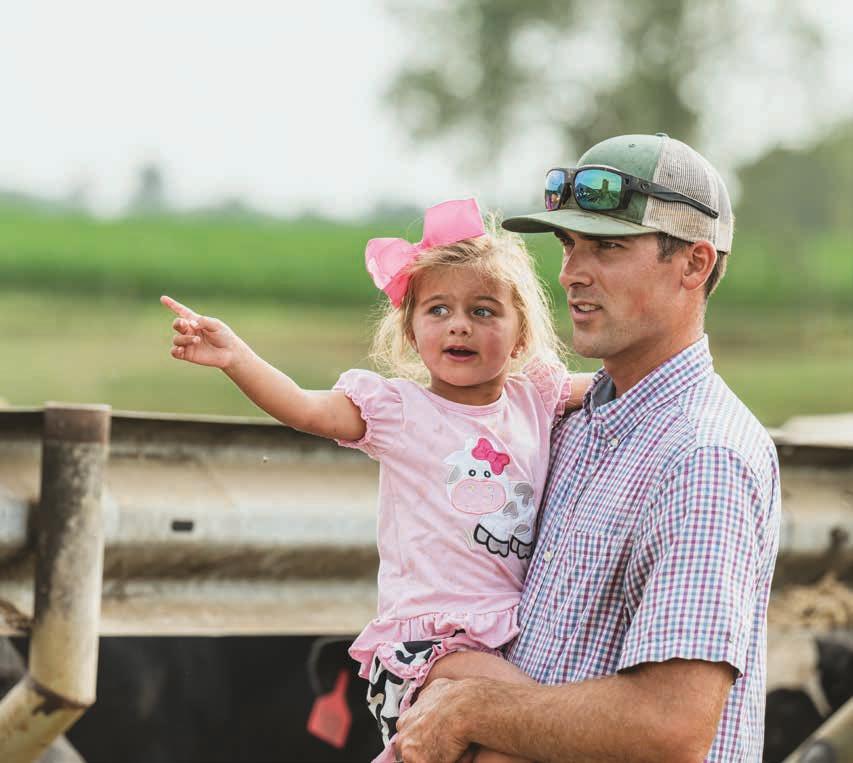



Whether you’re sorting calves, prepping for weaning, or gearing up for fall breeding, Behlen Country has equipment that works as hard as you do. Designed for long days, rough weather, and real results.




AAA#17583446

MILL BRAE FP JOANIE 3063
AAA#17630369
The incredible dam of Montana Judgement 1038, Mill Brae Benchmark 9016, and Montana Jake 1036. Progeny by Coleman Glacier 041, Sitz Incentive 704H.
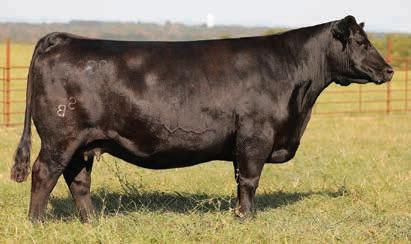
An elite, powerful, proven daughter of SAV Resource 1441. Progeny by Blairs External Law, Sitz Galactic 723G, SAV 8180 Traveler 004, ZWT Blueblood 1508.

SHADY BROOK EVERELDA 9523
AAA#19731957
The eye appealing dam of the $80,000 ZWT Rendition 3039 and the $22,000 ZWT Defender 2722. Progeny by KLA Respect 186, Sitz Incentive 704H, SAV Renovation 6822. SAVE THIS
STOP IN ANY TIME DURING THE FALL AND PREVIEW THIS EXCITING, POWERFUL OFFERING.
WE LOOK FORWARD TO SHOWING YOU AROUND & SEEING YOU SALE DAY - NOVEMBER 6!
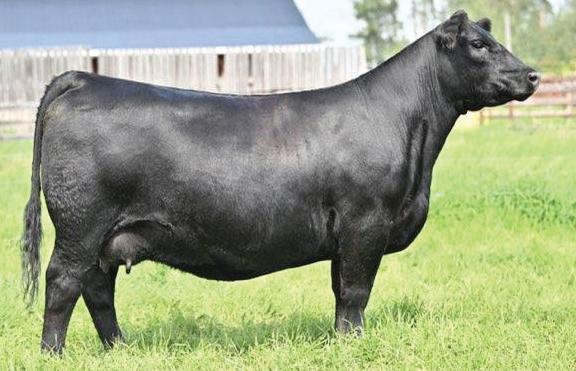

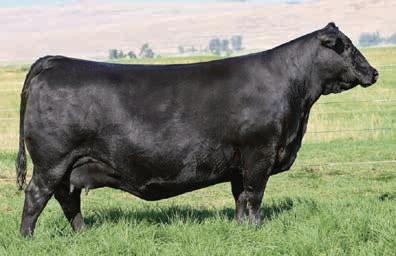
Thanks for joining us! We are a free, premier livestock publication featuring and serving seedstock and commercial beef producers nationwide. Raising cattle is so much more than a hobby; it is our livelihood and our passion. We understand that, and in every issue want you to see not only incredible cattle, but also relatable, entertaining, and informative editorial features for the producer with 5 or 500 head.
To us, you are more than reader or advertiser; you are a beef producer. We are committed to doing our best for you, every day. Please feel free to communicate with us, your input is appreciated.
BILL SCHERMER, Owner/Herd Consultant
641.425.2641 | bill@stockmanmag.com

Bill and his wife, Nancy, have made their living in the cattle industry. He has provided marketing services for purebred and commercial breeders since 1970. Schermer Angus Cattle continues to be active in the NJAA and raises quality cattle near Clarion, IA. As owner of The Stockman, Bill leads by example providing producers with the highest level of customer service.
CHERYL KEPES, Assistant Editor
417.766.0990
cheryl@stockmanmag.com

Working for The Stockman is the perfect combination of two of Cheryl’s favorite things: writing and cattle. Cheryl has decades of experience as a professional writer. She finds great joy in sharing stories about people in the agricultural industry. Cheryl’s family raises registered Angus, Red Angus, and Simmental cattle in Fair Grove, MO.
KIM BANKS, Graphics
507.530.0914
kkbanks@frontiernet.net

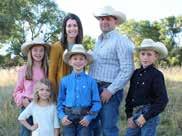
Makayla serves as editor, graphic designer, and manager of The Stockman. Her focus and passion continues to provide high quality service and original promotional materials to cattlemen. She and her husband, Jared, raise their four kids, and together they run their family operation, JMF Herefords and SimAngus, near Morris in west central MN.
SARAH HILL, Editorial Writer
307.274.0419
sarahhill1007@yahoo.com

Kim is a graphic designer with many years of design experience. Producing creative marketing materials to help others look their best is what she loves doing the most. She and her husband, Kevin, along with their son, raise grain and have a small commercial cow/calf and feeder operation on the family farm near Lynd, MN.
MARIA OPHEIM, Social Media Manager
507.828.1374 riawbr@gmail.com

Maria, her husband Cade, and daughter Tawnee, of Mound City, S.D. currently reside on their fifth
generation commercial & Limousin cattle and grain operation. Maria also works as a R.N. She is excited to promote producers through The Stockman’s social media platforms!

Sarah lives on a small hobby farm near Arlington, SD, with her husband, Braeton, and their three daughters: Harper, 8, Vayentha, 5, and Aurora, 1. She grew up on a Missouri dairy farm and has an Agricultural Journalism degree from the University of Missouri. Sarah enjoys baking, reading, and gardening.
SAWYER STYLES, Social Media Intern
605-290-6887
sawyer.styles@outlook.com

Sawyer Styles, originally from Brentford, South Dakota, grew up on her family’s registered Angus operation, where she developed a deep connection to agriculture and rural life. She attends SDSU and is just wrapping up a semester studying at Oklahoma State University.
715.573.0153
tcreds@gmail.com

Ty works alongside his family in their purebred operations, Country Lane Farm and TC Reds near Ringle, WI. An advocate for youth programs and dedicated cow/calf man, he is excited to help producers merchandise their cattle. TY BAYER
JAN FORD
800.693.8048
jford17879@aol.com

With her passion for agriculture, Jan brings over 35+ years of advertising sales experience in the beef industry. She and her late husband Norm had a commercial Angus cow herd and grain operation near Tipton, IA, which her sons still manage today.
BRIGHAM AND MEGAN STEWART
785.747.8028
megancollisondvm@gmail.com

Brigham works alongside his parents at Mid Continent Farms, their large, multi-breed cow/calf operation in Kansas. Megan graduated from ISU as a DVM in the spring of 2021 and is a big part of her family’s Angus herd and Veterinary Clinic in Iowa.
CHAD AND BRANDI CLAUSSEN
563.349.5089
chad.claussen@yahoo.com

Chad Claussen and his wife, Brandi, along with their two sons, operate purebred and commercial cow herds in Stockton, Iowa. The Claussen family also enjoys showing cattle, goats, and sheep. Off the farm, Chad works in the HVAC industry and Brandi works as an inventory and harvest coordinator.
RON HINRICHSEN
785.770.0222
rlangus@bluevalley.net

For the past 30 years, Ron, his wife, Lynne, and their two children have owned and operated Hinrichsen Ranch, a registered Angus ranch in Westmoreland, KS. He has an extensive background in the agricultural industry and is excited to put it to work for each of his customers.
CARTER WARD
carterward79@gmail.com
816.261.0891

Carter resides in Plattsburg, MO, with his girlfriend, Mandi, where they help run Ward Brothers Livestock with Carter’s family - their primary focus is Angus show cattle. Carter is also a partner in Campbell/Ward show cattle that specializes in the Hereford breed.
970.596.4965
creamer b 150@hotmail.com

Brandon owns Lazy JB Angus with his parents and sister in Montrose, CO. Raised in the cattle industry, he has a true passion for it and loves marketing quality cattle throughout the US. BRANDON CREAMER
LORA HUTCHINS
615.293.3695
loralea1172@gmail.com

Lora owns and operates Destiny Angus Farm with husband Brian and daughter Morgan in Charleston, IL. They have raised and shown cattle successfully on the national level for several years. They also have owned a production herd with as many as 200 registered cows.
STEVE WOLFF
701.710.1574
swolff318@yahoo.com

Steve is a third generation Hereford breeder - his family has been raising Herefords since 1951. He offers bulls by private treaty every year and has a heifer sale every fall. Steve also enjoys traveling to sales and shows whenever possible and likes camping as well.




Behlen
Lapke/Sachau
The


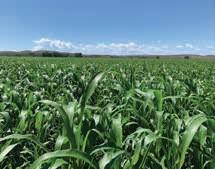

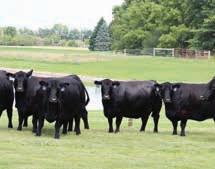

605.690.6050

The other day, our 5-year-old daughter asked me how many babies she should have when she grows up. She is super optimistic, open, and blunt with us at home, so I wasn’t completely taken aback by her question. Lately she’s been asking for help to do the math to figure out how many more years it will be until she’s 17. She’s trying to decide if her husband would be okay with living in our barn, or if they should buy the neighbor’s house down the road - she just wants to stay close to home. And it melts my heart. But what I also see is my little blonde, curly-haired baby growing up way too fast. I tell her that I need her to stay little for a while longer, because I haven’t had enough snuggles and we haven’t read enough books at bedtime yet. It’s funny to me that kids want to be adults, and adults wish they were younger again to take naps, eat whatever they wanted, and hang out with friends anytime.
You might be wondering how many kids Emmy wants to have? I asked her how she feels in her heart, and she told me six kids. She asked if I can help homeschool them and said they will be over everyday for cookies while we drink coffee together! I am going to be the luckiest grandma ever! But that will come with time. For today I want my kids to feel like they are the lucky ones. For us, that means spending time together as a family of six (unplugged from the world) doing what we love the most - tending to cattle and enjoying life on the farm.
Are you planning on hosting a fall sale? Our team would love to help you with your promotional needs! Catalogs, print and digital ads, trifolds, and logos - just to name a few. Contact us for a no-obligation quote, and remember - we not only design your materials but we can get them printed, too. We’re a one-stop shop! Let us know how we can help you out.
Hoping you enjoy the rest of your summer!
publication date
September 1, 2025
materials due
August 10
October 1, 2025 September 10
November 1, 2025 October 10
December 1, 2025 November 10
January 1, 2026 December 1
February 1, 2026 January 10
March 1, 2026
April 1, 2026
February 10
March 10
May 1, 2026 April 10
August 1, 2026 July 10
rate/issue
full page
$800
half page $450
third page $350
reference card $80
double card $300
ring service call for a quote
proud member





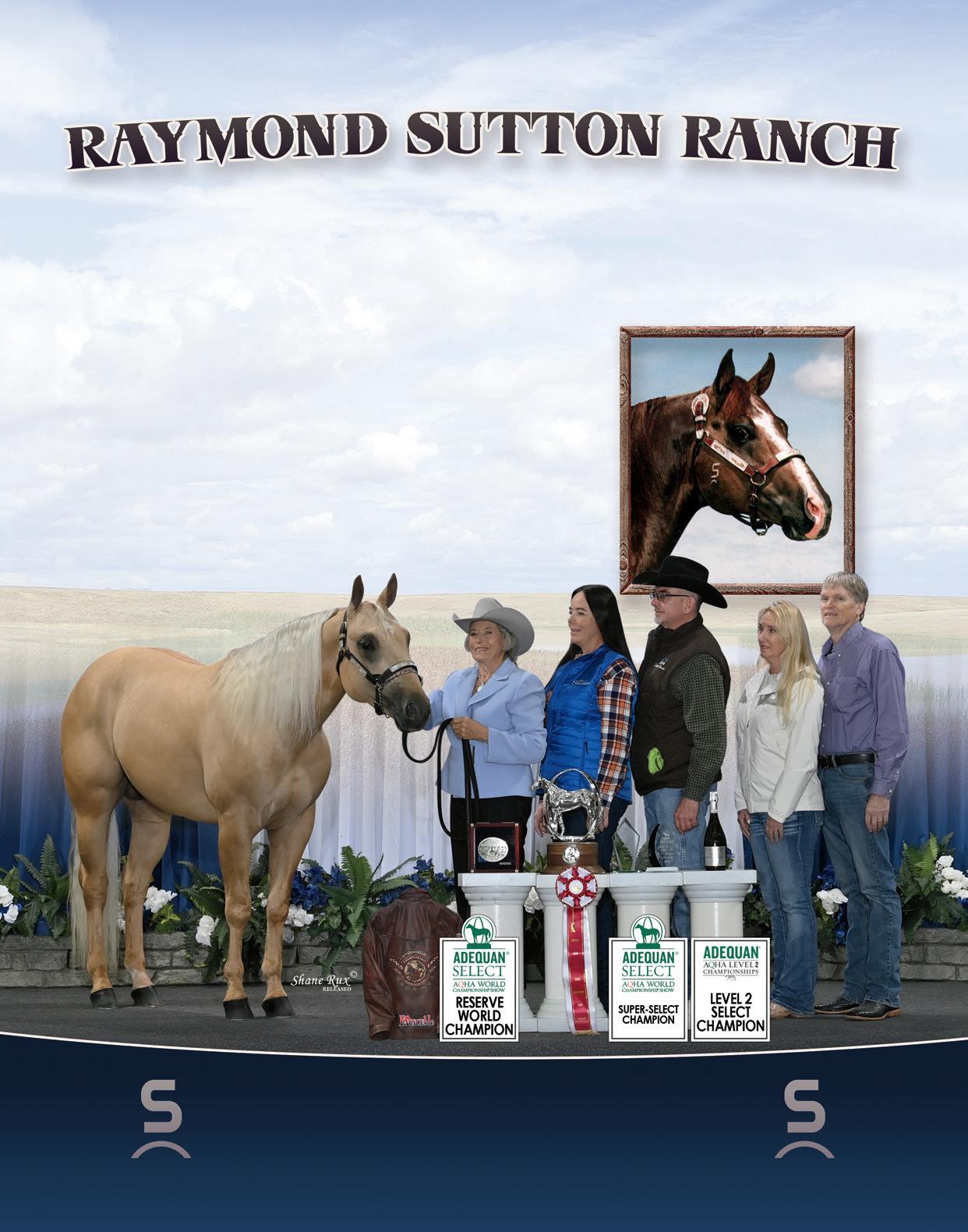
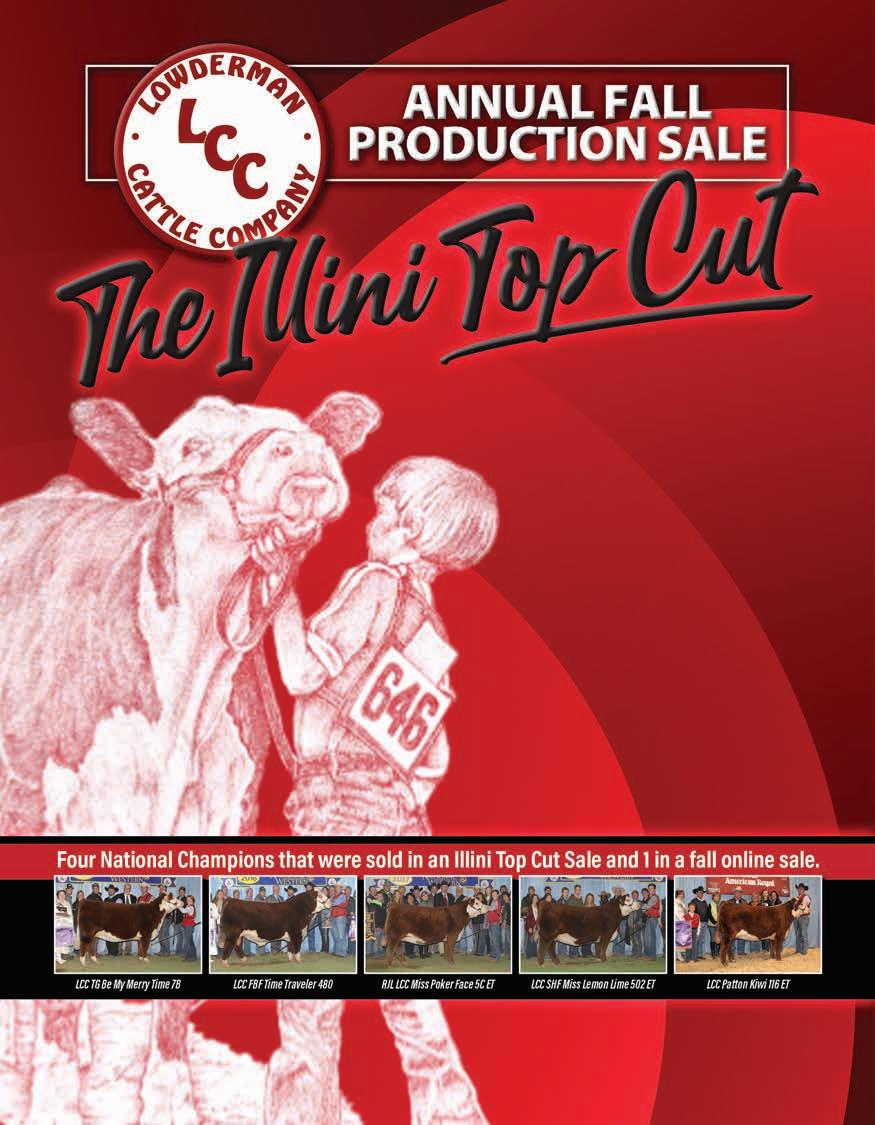


We understand the days are long, but the hours are short. Mother Nature can wreck havoc in the most unexpected times, and the work seems to never be done. It’s too much rain, or not enough. When it’s too much, drop to a knee, and thank the good Lord for the incredible blessings he has bestowed upon us. Get a good night’s sleep, wake up refreshed and ready to take on a new day. Keep pushing...
Our thoughts and prayers go out to those affected by the natural disasters in the south.
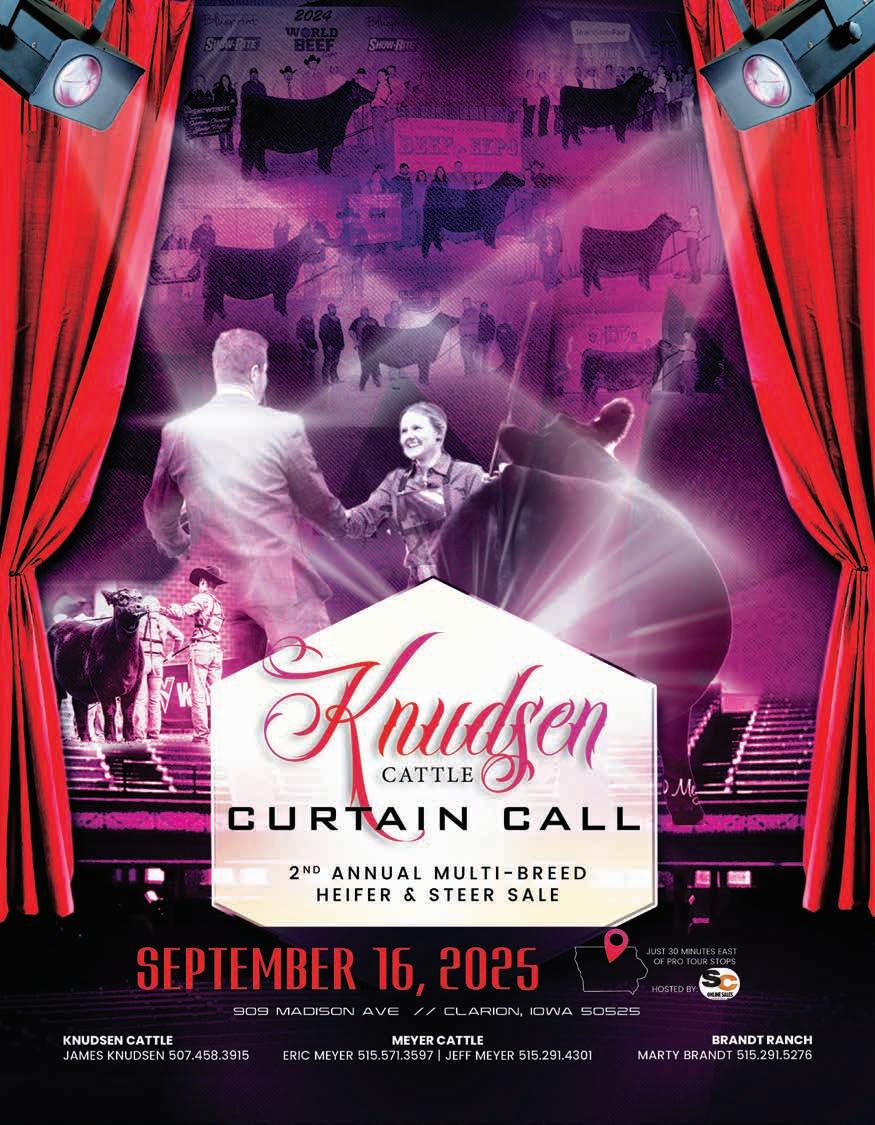
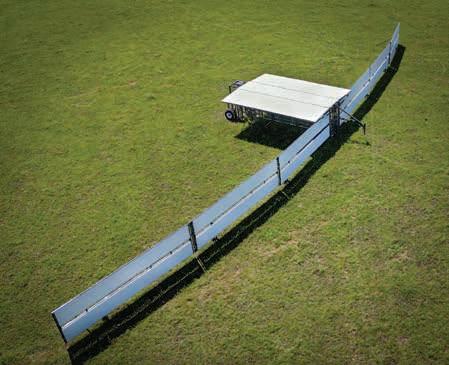

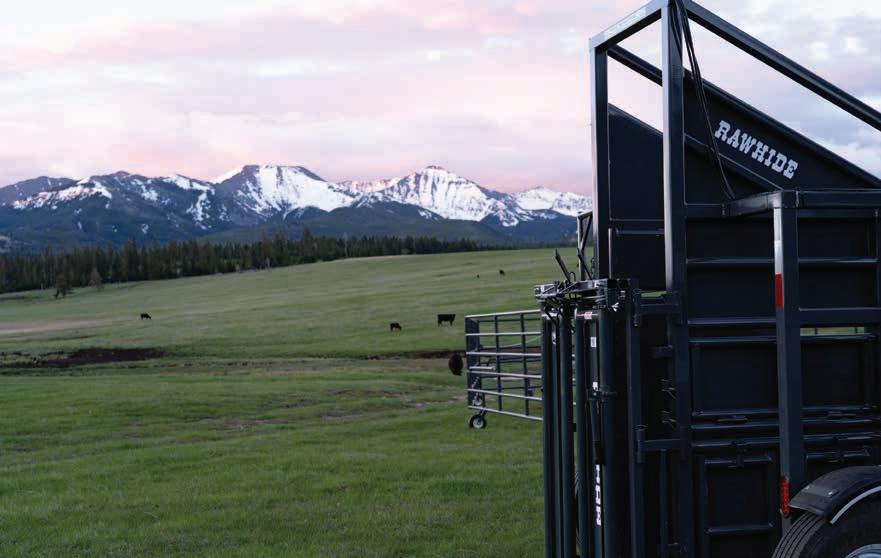







By Cheryl Kepes
Behlen Mfg. Co. builds loyalty through its relationship-centered approach to business.
uring the latter years of the Great Depression, Walter D. Behlen forged a thriving business from the modest trappings of his garage in Columbus, Nebraska. Walter created steel toe caps for work shoes and clamps for wooden egg crates. His humble startup swiftly evolved into a popular farm products business.
Now almost 90 years after Walter’s initial fabrications, Behlen

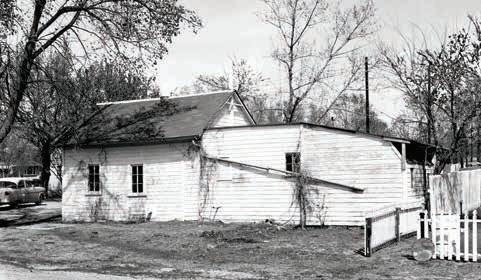
Manufacturing reigns as a global leader in the manufacturing industry. Through the decades, Behlen has increased its product offerings, acquired other manufacturing companies, and restructured its business model to emphasize employee engagement and customer feedback.
Behlen Country is one of Behlen Mfg. Co.’s key business units and a leading manufacturer of agricultural products. Focused on serving the needs of farmers, ranchers, and rural property owners across the U.S., Behlen Country offers a wide range of durable, practical products – from livestock water tanks and fencing to gates, feeders, and land management tools like box blades. With a reputation for quality and

reliability, Behlen Country plays a vital role in supporting the agricultural community nationwide.
“We have folks who are seasoned farmers and ranchers. We have folks who are trying their hand at homesteading to become more self-sufficient for themselves and their families,” Clinton (Clint) Hamling, President Behlen Country, said. “Our array of product offerings is one of the great things that makes Behlen so unique. No matter the size of your operation or type of your operation, we are able to offer products to help everyone.”
In 1984, TR (Tony) Raimondo led a bold management buyout of Behlen Mfg. Co., returning it to local ownership. This pivotal move marked the beginning of a new era for the company. Over the following



decade, TR spearheaded a historic turnaround, reinvigorating Behlen’s product lines, redefining its workplace culture, and establishing a strong foundation for growth rooted in innovation, accountability, and people-first leadership.
Behlen’s employees are given the designation of Partners in Progress. The commitment to operating as a team stems from TR’s deeply rooted philosophy of teamwork, emphasizing shared responsibility and collective success across the company.
“TR wanted to create an environment based on mutual trust and respect. One of the first things he did was remove the timeclocks and employees were trusted to record their individual work hours in a company-wide honor system. This people-first mindset laid the groundwork for a leadership model centered on open communication, trust, and empowerment,” Juli Thelen, Behlen Mfg. Co. Executive Assistant, stated.
Under TR’s guidance, Behlen shifted to a participative business model focusing on a concern for people, continuous improvement and learning, and the introduction of products to new markets. In addition, the company replaced all
titles, such as director and manager, with the term team leaders. TR even referred to himself as a team leader or coach.
The commitment to a company culture rooted in teamwork and respect positively resonates with
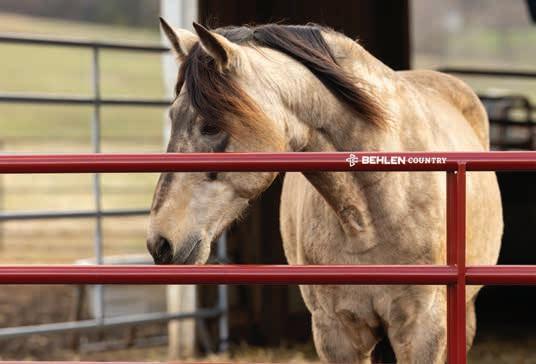
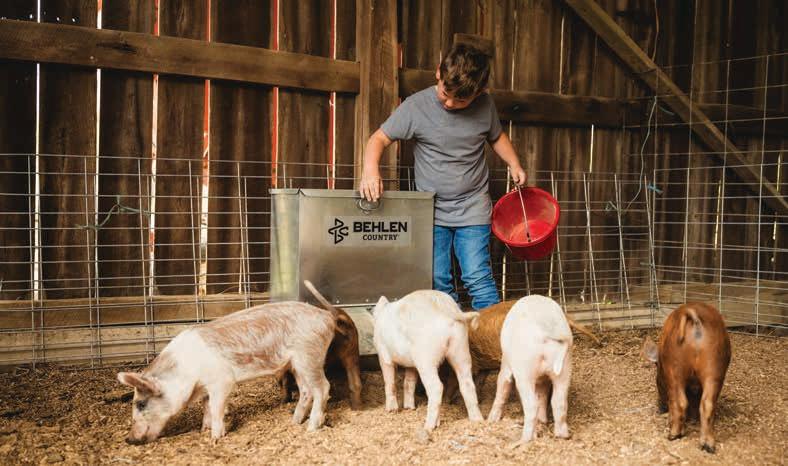
Behlen’s workforce and customers to this day. “The beauty in a family-owned business is being in a position where your voice is heard and your opinion matters. So, with the company being family-owned and being able to keep the voice of the customer and also the voice of the employees, it brings everything full circle,” Clint shared.
While Behlen’s foundation of trust, teamwork, and people-first leadership remains strong, they’ve introduced more structure and accountability to keep pace with today’s dynamic markets. These changes reflect Behlen’s commitment to staying competitive, adapting to the needs of their customers, and ensuring long-term success for their team members and the communities they serve.
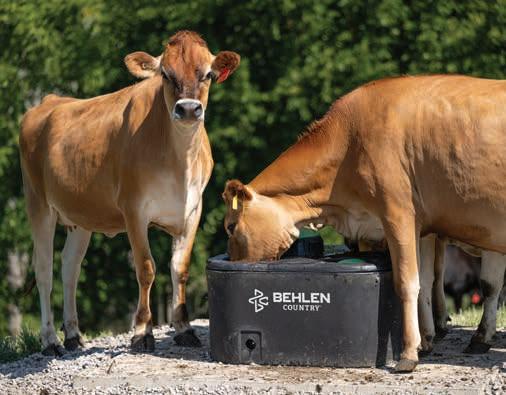
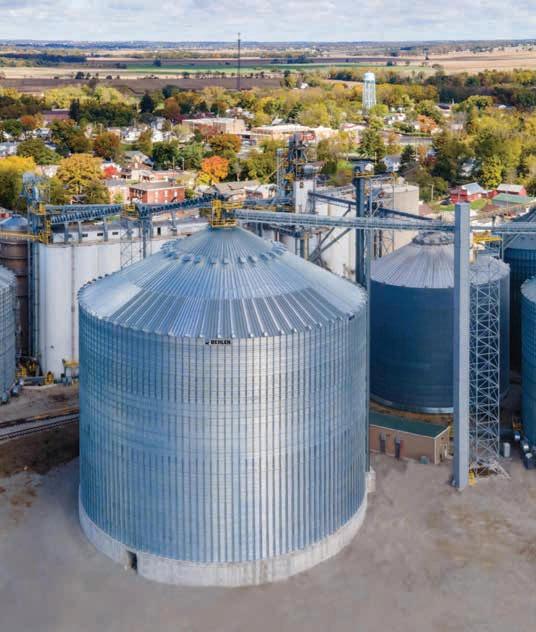
Behlen consists of six primary business units: Behlen Country, Behlen Building Systems, Behlen Grain Systems, Behlen Custom Fab, Behlen Joiners, and Hilton International Industries Co. The company’s known in several different industries for its innovative approach to manufacturing products. Tony Raimondo Jr. serves as Board Chair and Tom Boal is Behlen’s president and CEO.
The company’s headquarters remain where it all started in Columbus, Nebraska. Behlen’s expanded operations through the years with plants located in Baker City, Oregon; McGregor, Texas; and Sarasota, Florida. The plants are strategically located in the U.S. to ensure customers receive products promptly and economically.
Behlen Country products are available in local farm supply stores as well as major retailers. Distributors and customers can place special orders for products that are not in stock. Behlen’s business units also serve customers worldwide.
One of the Behlen’s primary objectives through the years has been to provide excellent support to its customers. “Behlen’s unmatched customer service truly is second to none. Each order is individually identified to ensure all parties including sales, engineering, and production know what is going through the system and can answer any questions quickly and efficiently,” Greg Iburg, Behlen Grain System Sales Manager, stated.
Behlen Country prides itself in making sure there is someone available to assist customers with their needs and questions. “If you have a question about a product, give us a call and we will take the time to answer whatever question you have. I think that is something that is rare in this day and time, to be able to talk to a real person on the phone. It might be a simple question. It might be that the product isn’t working exactly the way you want it to, and you need to do some troubleshooting,” Clint explained.
Behlen has continued to grow its operations since its inception in 1936. The company has completed 14 acquisitions upon returning to local ownership in 1984. Most recently, Behlen purchased the assets of Sweet Manufacturing Company located in Springfield, Ohio. The procurement of Sweet Manufacturing aligns well with the goals and mission of Behlen’s business unit, Behlen Grain Systems.
“Behlen’s recent acquisition of Sweet Manufacturing allows us to better position ourselves in the marketplace as a one-stop shop for
all your grain handling and storage needs. Founded in 1955, Sweet Manufacturing has had global success in providing material handling options for 70 years. We are thrilled to embark on a new chapter with Sweet Manufacturing as we strive for continued success and growth,” Greg said.
A business with beginnings in an entrepreneur’s garage nearly a century ago, has flourished into a company that’s made its mark on the global stage – leaving one to only imagine what the next hundred years will bring.
learn more behlencountry.com




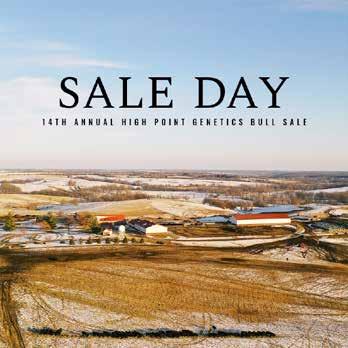





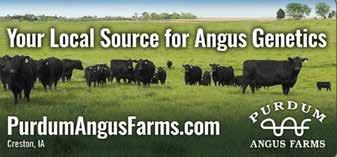
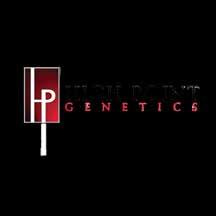

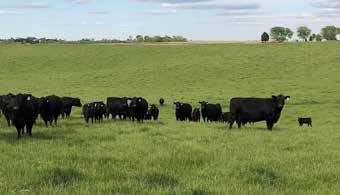














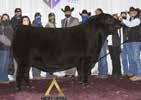



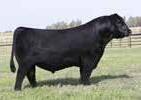


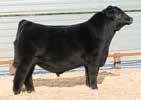


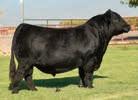


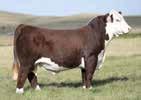


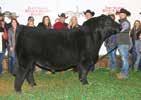


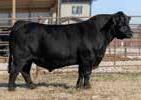

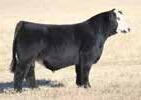
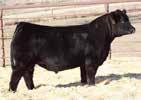
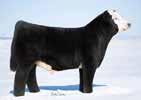





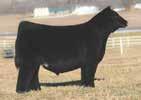









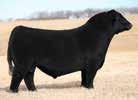





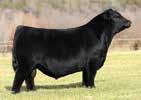
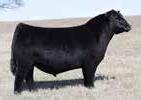

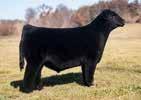

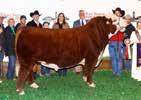

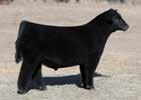


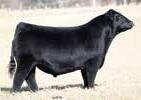
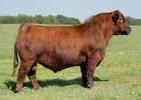

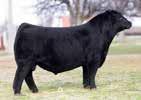


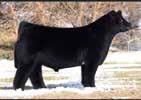

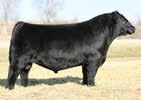

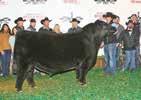

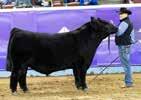

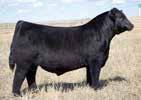


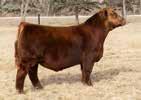

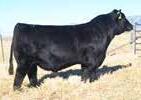

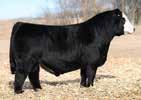



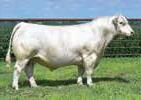

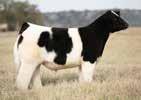
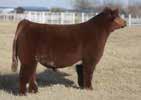






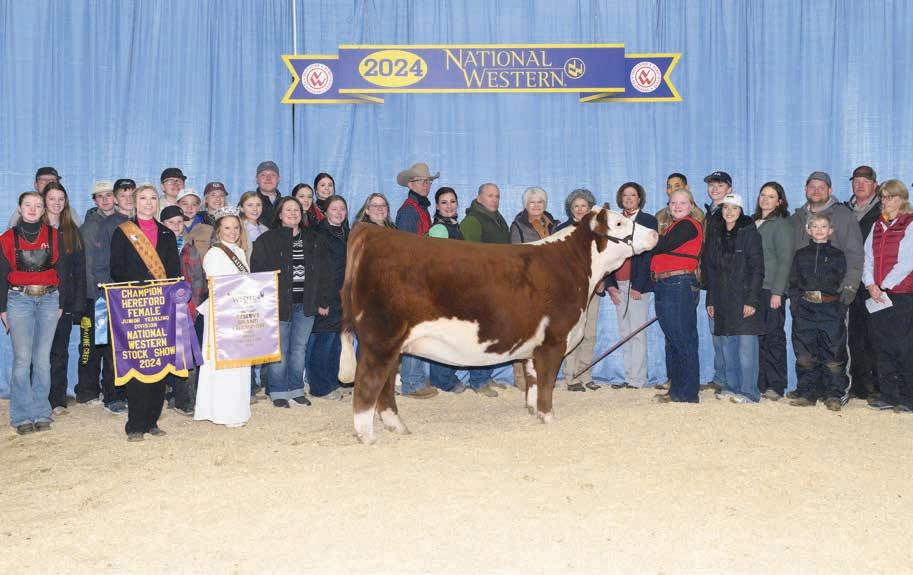

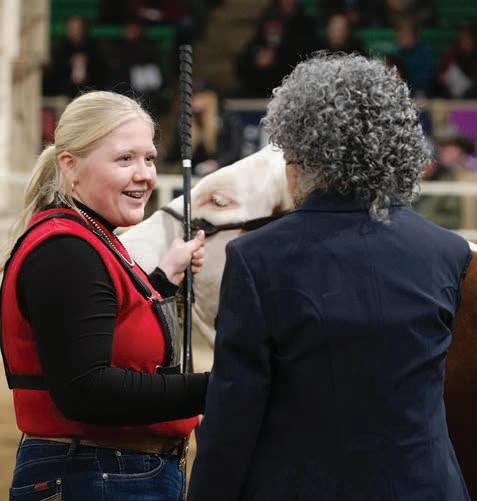


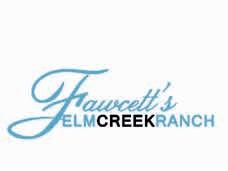
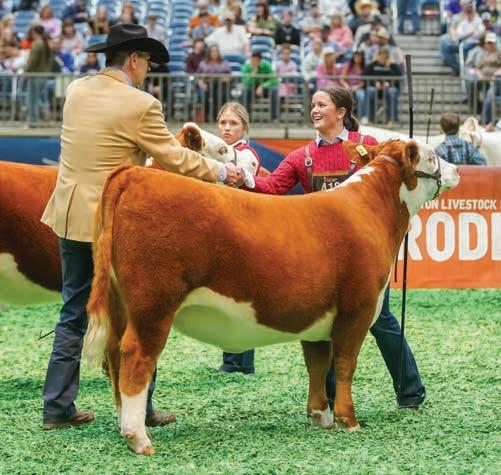
A non-restricted use, emulsifiable concentrate formulation containing 40% permethrin*
Highly effective against flies, mites, ticks, lice and many other pests
Registered for use on beef and dairy cattle, goats, swine, poultry, sheep, horses and dogs
Can be mixed with oil or water for premise sprays
Powerful protection against horn flies, face flies, house flies, horse flies, deer flies, black flies and mosquitos
Can be mixed with oil for use in back rubbers
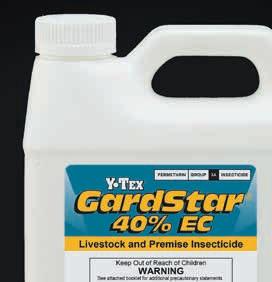
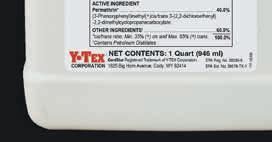
The perfect premise spray for use in barns, stables, farrowing houses, milking parlors and dog kennels
Easy to measure and once mixed, does not require further agitation
Works well in low-pressure pump sprayers as well as high-pressure power sprayers
Available in handy 4 fl. oz. bottles or economical quart jugs
Super concentrated: One 4 fl. oz bottle protects 393 cows from horn flies, lice and mange mites
Still the only 40% permethrin livestock pesticide on the market today
It all adds up to your best buy in livestock insecticides.
If you’re looking for one livestock pesticide that does the work of several, you found it with GardStar® 40% EC from Y-TEX. GardStar® 40% EC is the only 40% permethrin product registered for use on and around livestock. It delivers broad-spectum control of flies, mites, ticks and other pests on beef and dairy cattle, goats, swine, sheep, horses and dogs. And GardStar® 40% EC gives you the flexibility of applying it as a spray-on, dip, premise spray or in back rubbers. To learn more, see your livestock products supplier or visit www.Y-TEX.com

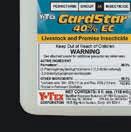

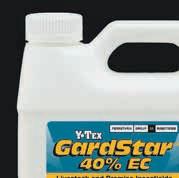
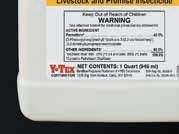

*GardStar® 40% EC is a restricted use pesticide in the State of New York. GardStar® and Y-TEX® are registered trademarks of Y-TEX Corporation. ©2024 Y-TEX Corporation.

University research you can use.
Yijie Xiong, Nebraska Extension Specialist, Precision Livestock Management
Mary Drewnoski, Nebraska Extension Beef Systems Specialist University of NE - Lincoln, UNL Beef beef.unl.edu
abor is tight, and input costs aren’t getting any cheaper. If you’re looking for ways to stretch your forage further, virtual fencing (VF) might be a tool worth adding to your operation. These GPS-enabled collars allow you to create or move paddock boundaries from your phone or computer. No posts, no reels, no fence to drag across the pasture. That makes it easier to rotate cattle more frequently, adjust grazing patterns on the fly, and make better use of your existing forage without adding to your workload.
Each cow wears a collar that gives a cue, usually a sound, when they approach a virtual boundary. If they continue toward the boundary, they receive a mild electric pulse or vibration. After a short training period, most cattle adapt well and respond to the stimuli without needing a physical fence. The collars also provide GPS tracking data, so you can monitor where your cattle are and how much they’re moving. You can even use this data to flag animals that might be calving or sick based on changes in activity. A few weeks ago, we were getting ready to
move a group and noticed (from our phone-app) one cow wasn’t with the rest. Her movement pattern showed she’d been traveling about half as much as the others. Sure enough, she had a split hoof and needed a bit of doctoring.
Whether you’ve already been using rotational grazing or are just starting to explore more intensive management, VF can help you take grazing to the next level. It gives you more flexibility and control. You can rotationally graze areas that are difficult to fence, prevent overgrazing in problem spots, or force cattle to graze areas they usually avoid. If you have streams in your pasture and want to protect the banks from erosion, VF can allow you to give limited access without having to maintain water gaps. For those that rent pasture, being able to increase grazing management without investing in additional infrastructure can be a real win.
Because you’re not physically moving fence, you can adjust your grazing plan quickly to match forage conditions, or weather. Is rain coming? You might fence cattle out of a low-lying area to keep it from getting torn up. Recently, we tested
whether we could keep two herds in the same pasture apart only using VF, and it worked. This could allow you to split herds based on nutritional needs, such as running a lead-and-follow system where thin or young cows graze through a paddock first and are followed by the rest of the herd.
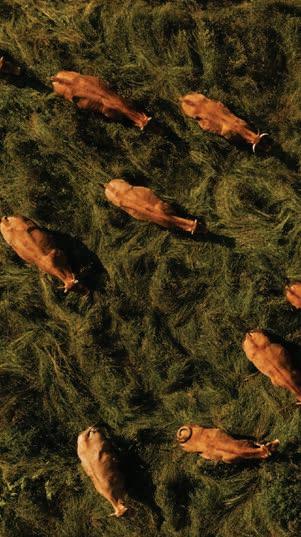
One consideration is signal coverage. Some systems rely on cellular networks, while others use radio frequencies and towers. Your terrain and location will determine which works best. Towers can work in locations without a cell signal, but they do need line of sight, and hilly areas can make it challenging to map out your coverage. The good news with cellular systems is that you don’t need strong service. If you can send a text, the collars will work most of the time, even in areas where you can’t reliably make a call. And the collars don’t need to be connected at all times. They just need to communicate with the cellular servers when it’s time to send data or receive updates, like moving a paddock or changing a boundary.
The size of the herd will also impact which option is a better fit. Tower-based systems often require a significant upfront investment for the towers while “leasing out” the collars, so they tend to make the most sense when spread out over a large number of cattle. Cellular-based systems can come either with a monthly fee, or an upfront fee charged per collar, which can be a better fit for smaller herds.
Battery life is another factor. Some collars are solar-powered, while others rely on rechargeable batteries that last from a few weeks to a few months. If you’re doing frequent moves, like strip grazing or using smaller paddocks, cattle will interact with the boundaries more often, which increases battery use. In those cases, solar-powered collars can offer a real advantage by self-recharging in the field.
Ease of use also matters. Some systems have simple, user-friendly apps that are easy to learn. Others may take more time to set up and manage. Trying a demo can help you decide what fits your management style.
Think about the scale of your operation as well. Some systems offer higher GPS accuracy, which is important for smaller paddocks or intensive grazing setups. Others are built for managing large pastures and big herds where that level of precision isn’t as critical.
Finally, consider the cost structure. Some companies offer rental options for the collars themselves, which can reduce upfront costs to an extent. Others require full purchase but may offer lower per-collar costs over a longer contract term.
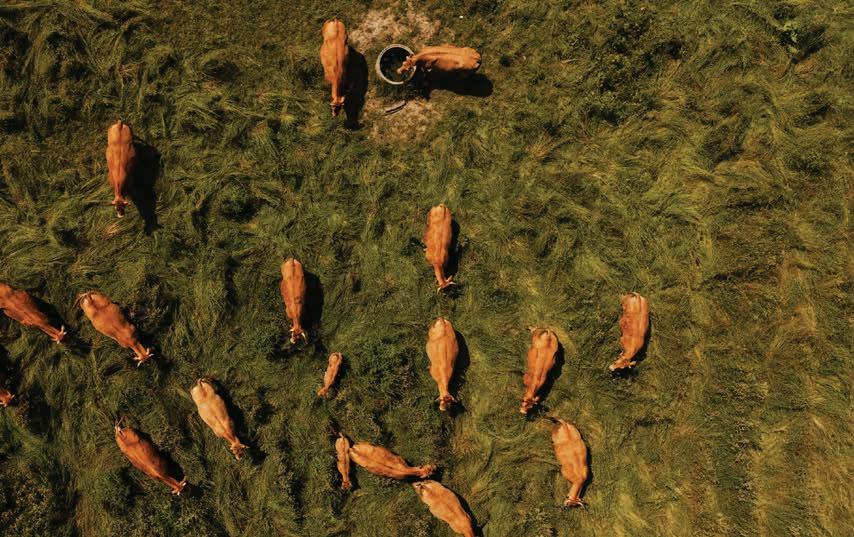
If you’ve been thinking about grazing more intensively but haven’t had the time or labor to make it work, virtual fencing might be the tool that makes it possible. It gives you more control with less effort and helps you get more from the forage you already have.
Courtesy University of NE - Lincoln, UNL Beef
Interviews with the authors of BeefWatch newsletter articles become available throughout the month of publication and are accessible at: www.go.unl.edu/podcast.
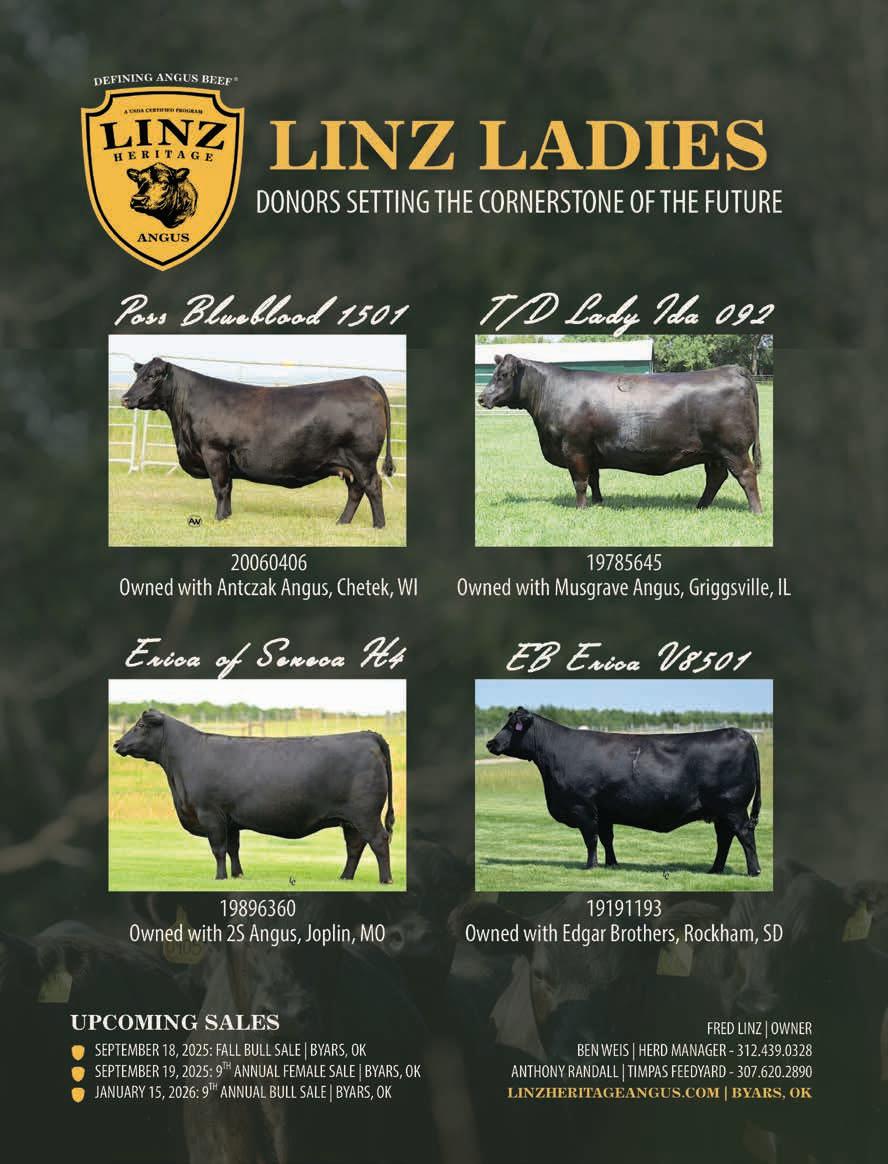
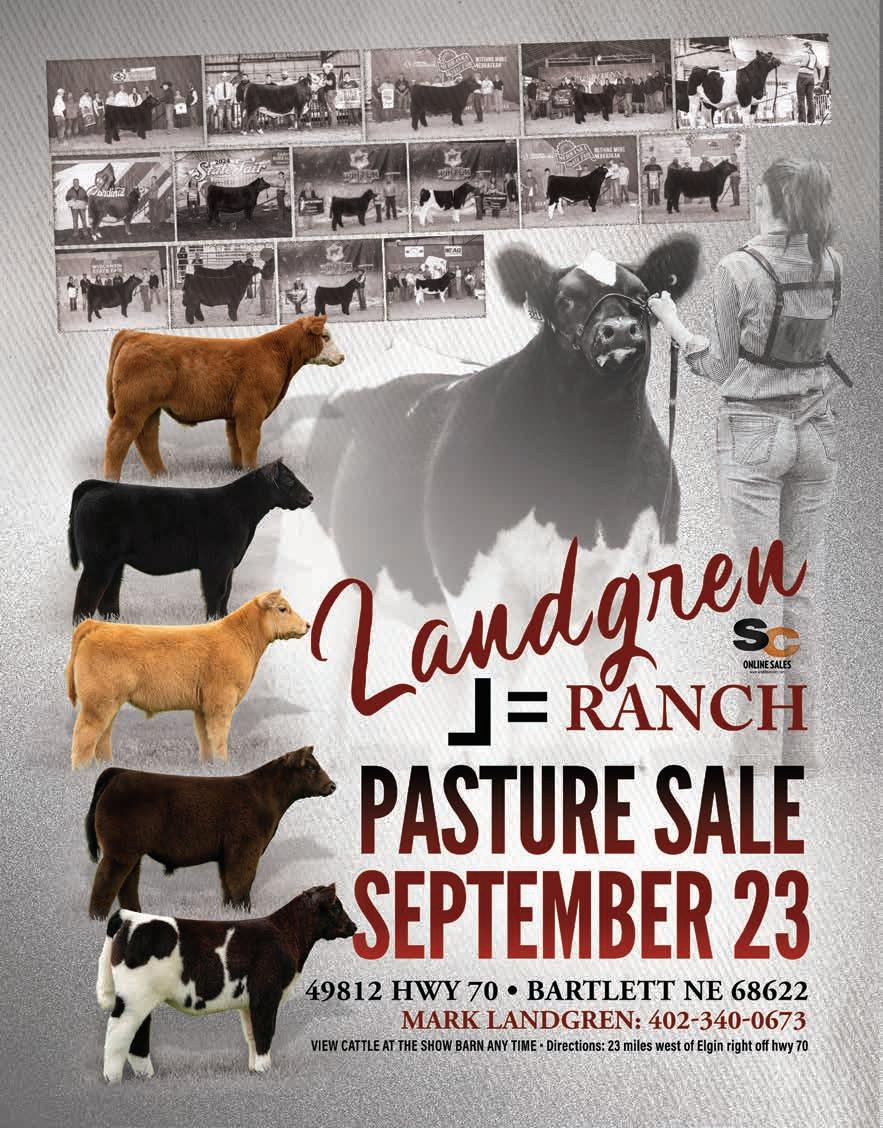

ZWT RANCH WILL BE HOSTING THE TENNESSEE ANGUS FIELD DAY SATURDAY, AUGUST 2, 2025
PANEL DISCUSSIONS!
H KIRK DUFF –HOBART, OK H KEVIN BLAIR –SASK, CANADA H CHRIS & KRISTY EFFLING –HIGHMORE, SD H CLINTON LAFLIN –RUSSELL, KS H DAVID BROWN –BIGFORK, MT
H SHIRLEY KAUFMAN –BUFFALO GAP, VA
H SONYA SMITH WRIGHT –LEBANON, TN
FIRST PRIZE IN THE CONTEST WILL BE A REGISTERED ANGUS HEIFER DONATED BY ZWT RANCH! CALL
TENTATIVE SCHEDULE:
8:00 a.m. to 9:30 a.m. Registration and sign-up for Judging Contest Ranch tours begin 10:00 a.m. to 11:45 a.m Junior Judging Contest
Panel Discussion ‘Making Your Cattle Work for You’ Noon to 1:15 Lunch courtesy of ZWT Ranch 1:15 p.m. Panel Discussion ‘Pursuing Your Passion in Livestock’ 3:00 p.m. Judging Contest Results & Awards Ranch tours continue
The Field Day will feature a Junior Judging Contest for youth, ages 8-18 as of 01/01/2025.

Bringing a group? Kindly email an RSVP to Elizabeth@zwtranchevents.com
Ranch tours, door prizes, giveaways, and fun for the entire family –including a bouncy house will be available for young children.
Champion ShorthornPlus Female, ’24
Cattlemen’s Congress Open & Jr Show
~ Shown by Josie Beiser
Reserve Champion ShorthornPlus Female, ’25 NJSS
~ Shown by Carter Wickard
Reserve Champion ShorthornPlus Female, ’25 Cattlemen’s Congress Jr Show
~ Shown by Samantha VanVorhis
Champion Female, ’24 NJSS, NAILE Jr Show & Cattlemen’s Congress Jr & Open Shows
~ Shown by Carter Wickard
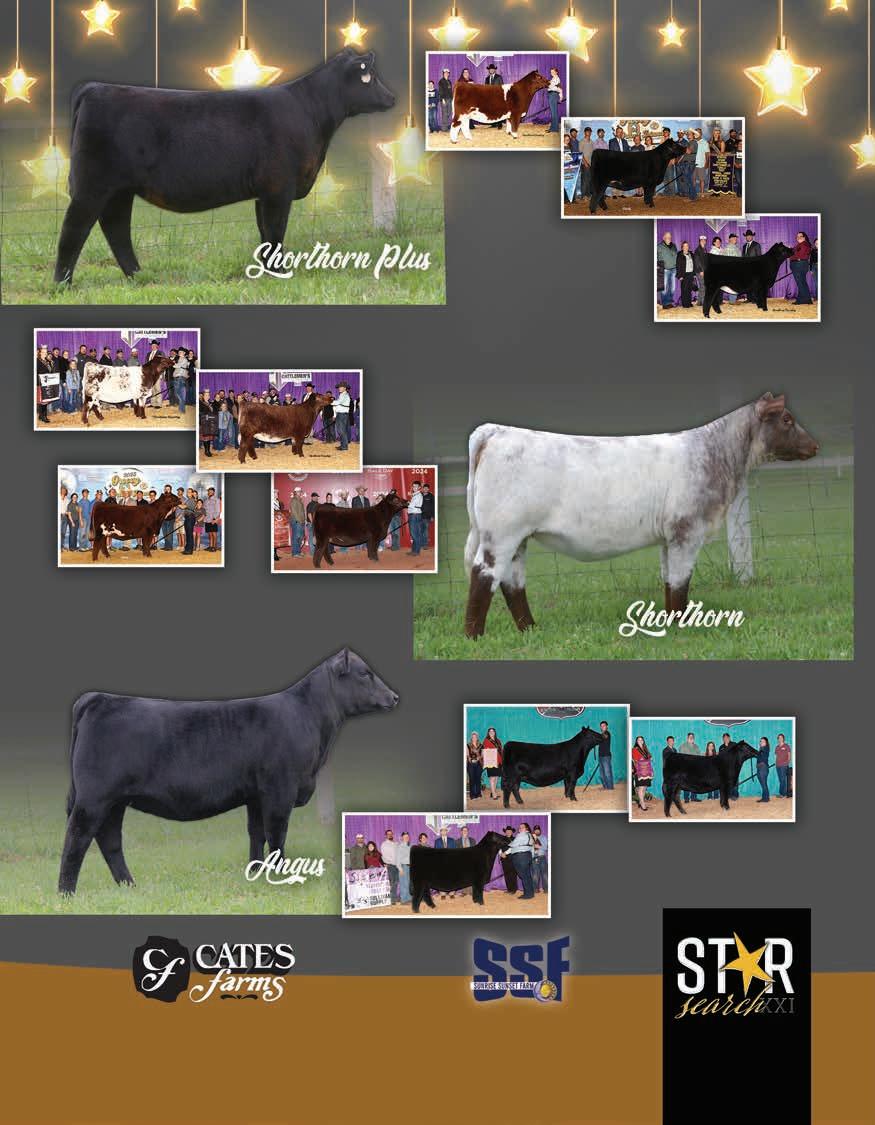
Reserve Champion Female, ’25 NJSS ~ Shown by Skyler Ward
Champion Female, ’24 NAILE Open Show & Reserve Champion, ’25 Cattlemen’s Congress Open Show
~ Shown by Miller Smith
Champion Female, ’24 American Royal & FWSS ~ Shown by Reid Hanies
Reserve Division V Champion, ’25 NJAS
~ Shown by Mercedes Ferree
Division II Champion, ’25 NJAS ~ Shown by Mercedes Ferree
Supreme Champion Female, ’24 Cattlemen’s Congress Jr Show
~ Shown by Samantha VanVorhis

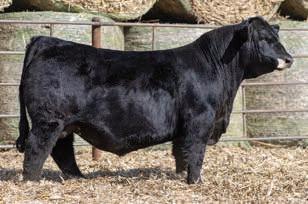

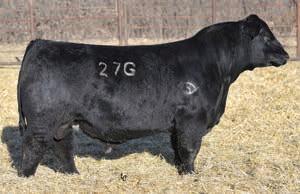

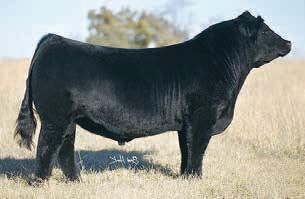

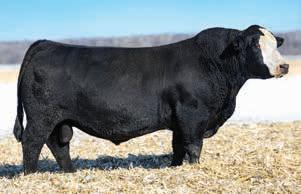

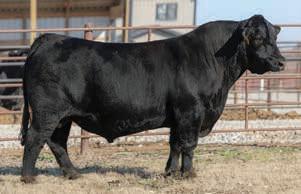

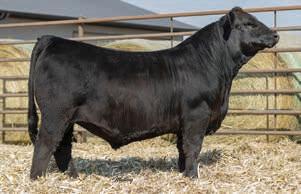

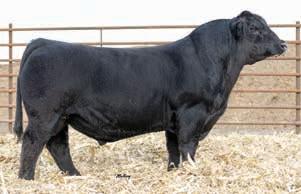



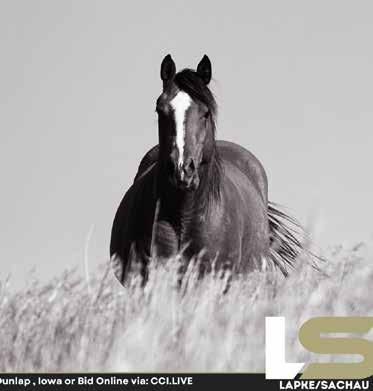
By
Lapke/Sachau Performance Horses, Dunlap, Iowa, focuses on strong genetics from award-winning bloodlines.
Working with horses on a cattle operation can instill a love for both species, and John Lapke, Lapke/ Sachau Performance Horses, Dunlap, Iowa, has been committed to raising high-quality Quarter Horses for 35 years.
“I grew up in a large cow-calf family, doing everything on horseback,” John Lapke said. “This is what started my interest and love of horses.”
After going to college in the mid-1990s, Lapke began a breeding operation along with his father, Ed, and brother, Tim, raising and showing rope horses. The family hosted their first production sale in 2000.
Their first really successful show horse was Genuine Doc O Lena, a 1996 stallion by Genuine Doc out of Rosezana Lena, an American
Quarter Horse Association (AQHA) World Champion daughter of Doc O’Lena. Genuine Doc O Lena accumulated close to 600 AQHA
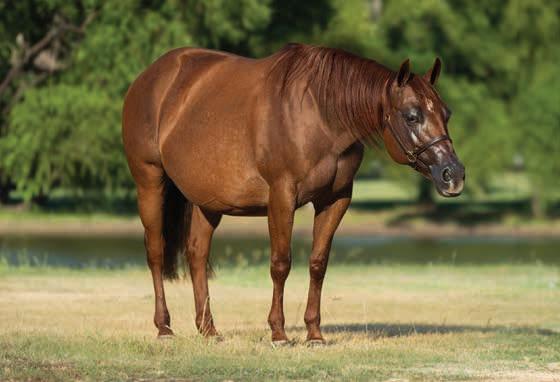

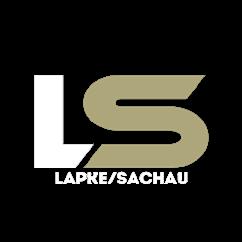
points in his career, and his genetics left a lasting mark on the Lapke/ Sachau herd.
“Eventually, we gravitated into showing in the cow horse and reining events,” Lapke said.
In 2012, the operation reduced their mare numbers and shifted to selling foals through private treaty and online sales.
“We eventually grew our mare numbers again, and I partnered with a longtime friend, John Sachau, on several well-bred mares,” Lapke added. “We brought back the live
auction in 2023.”
Today, the operation includes John and his wife, Kari, and their daughters, Olivia and Violet; Ed and his fiancée, Jane; Tim and his wife, Jamie, and their children, Aubrey and Gus; and John Sachau and his wife, Brinda and their daughters, Whitlee and Wrynn. Lapke/ Sachau Performance Horses has also worked with special guest consigners Ryan and Kelly Sonnichsen and their children, Sophie and Sawyer.
Fuel N Shine and Lena Gallo are two other sires that the Lapke/ Sachau operation has had great success within the show ring and reining events. Fuel N Shine is a 2004 son of Shining Spark and is out of Boomerita, a daughter of Boomernic. Fuel N Shine won the 2008 AQHA World Championship Junior Working Cow Horse.
Lena Gallo is a 2000 son of Gallo Del Cielo (Rooster), winning $178,000 as a National Reining Horse Association (NRHA) Futuri-
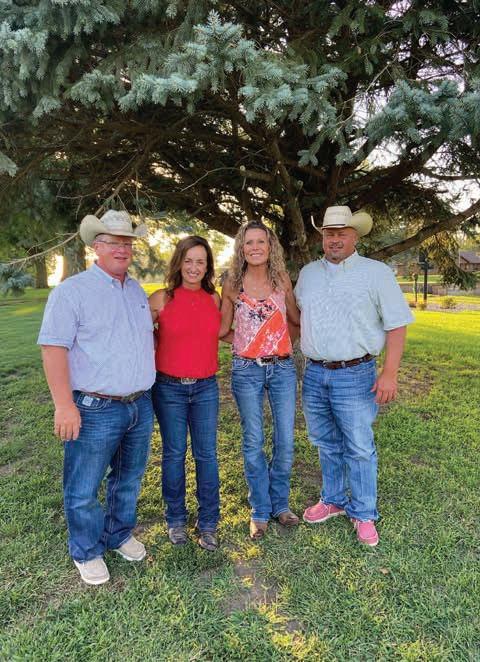
ty Open Finalist as a three-year-old. Lena Gallo was also the NRBC Reserve Champion as a five-year-old and was the individual gold medalist for Team USA in Manerbio, Italy, in 2008.
“We aim to produce pretty, straight-legged, conformationally sound horses,” Lapke said. “We try to incorporate versatile bloodlines that can excel in most all Western disciplines.”
Lapke and Sachau monitor which bloodlines are dominating the show world and work to include those
bloodlines in their stallion battery or brood mares. “Although I love our foundation lines, I feel that every generation should be better than the last,” Lapke added. “We don’t hesitate to add new genetics.”
Lapke and Sachau are fond of colored horses, while not giving up on quality. Their 2025 sale will include foals by sons of Hashtags, Wimpys Little Step, Playgun, Shining Spark, Metallic Rebel, Peptoboonsmal, and others. Complete listings are available on their Facebook page and sale catalog.
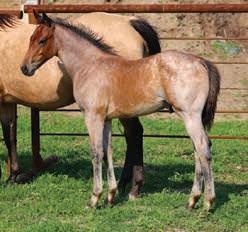
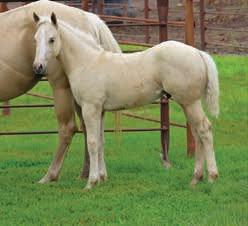
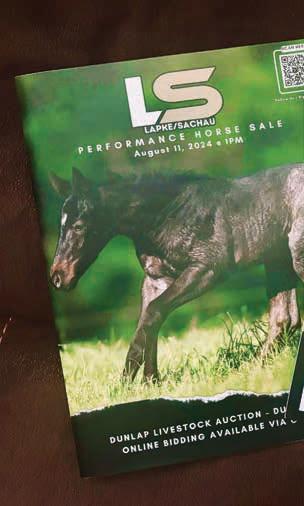
The broodmares graze on brome grass pasture in the spring and summer and begin a grain regimen around July 1. Foals start grain also by July 1 and receive dewormer at three weeks of age. Their broodmares graze cornstalks and soybean stubble during the winter and eat supplemental hay as needed.
Lapke/Sachau Performance Horses uses print advertising and social media to advertise for their sale and mails out sale catalogs upon request. Their sale is held live on CCI.Live.
Saturday, August 16, 2025
Dunlap, Iowa - Bid online: cci.live


“We work with Skye Mize from WhoaZone Equine for building our catalog and handling our social media advertising,” Lapke said. “We couldn’t do this sale without all of her hard work.”
Looking forward, Lapke/Sachau Performance Horses plans to continue producing versatile, athletic and pretty horses, while adding new genetics to provide their customers with the best possible product.

We’re a full-service marketing agency rooted in the livestock and agricultural industry. Our team has spent years working with ranches, breeders, and rural businesses across the country. We know this world. We know what matters. And we’re here to help you tell your story — clearly and professionally.

Yes, we do photography, but that’s just the beginning. We also offer:
Livestock Videography — bulls, donors, sale day
Graphic Design — print ads, catalogs, and sale flyers
Marketing Strategy — digital campaigns and content calendars
E-Commerce Solutions — selling semen, embryos, and ranch products online
Whether you need a simple site or a full marketing overhaul, we’re here to help you stand out.


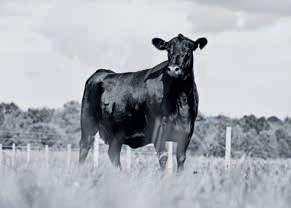

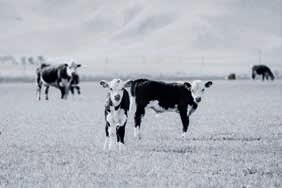

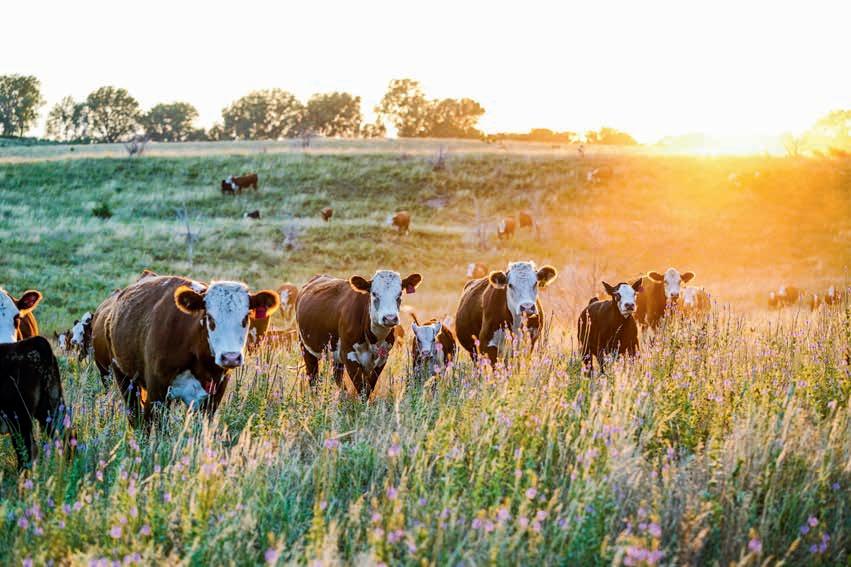
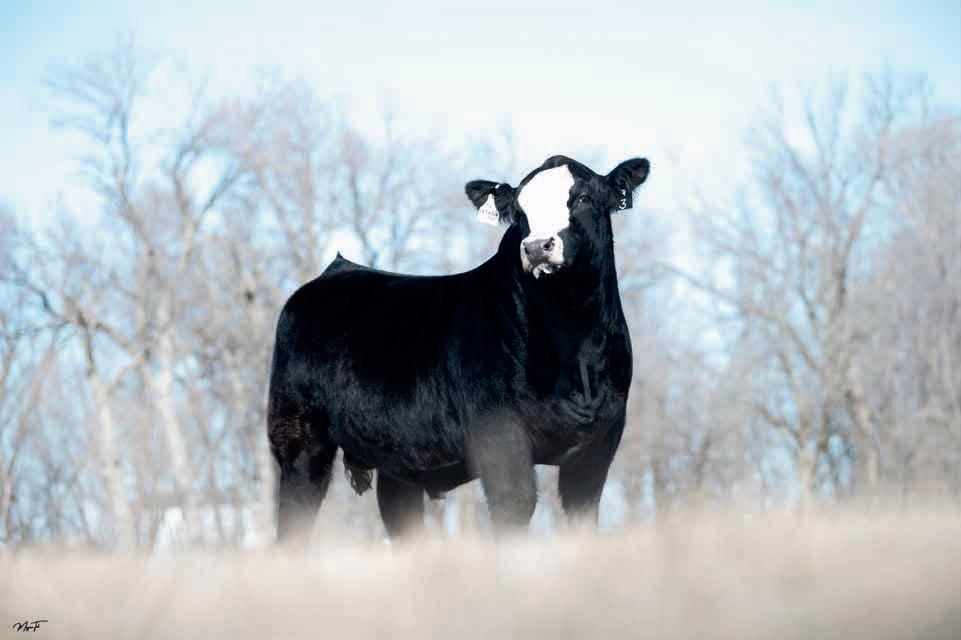
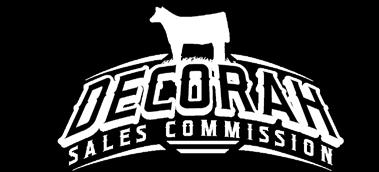

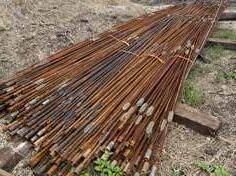

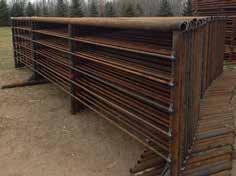

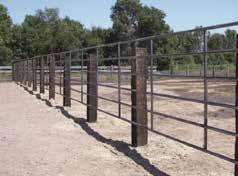
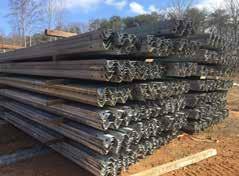
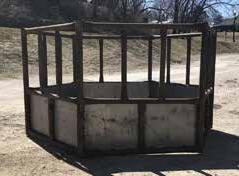








Functional forage and pasture.
contributed article by Justin Fruechte, Product Expert - Ag Renovo Seed, Brookings, S.D. renovoseed.com
The summer season is here, cows are on autopilot at pasture, and we are in summer mode, watching crops grow and making feed. However, with the summer season comes inclement weather season. Whether it’s a flood, hail, tornado or a derecho, every year there are
crop fields destroyed. This is catastrophic, but it seems to be a part of farming, so let’s try to understand how to find a silver lining in a bad situation.
Warm season annual forage crops have been termed as “emergency
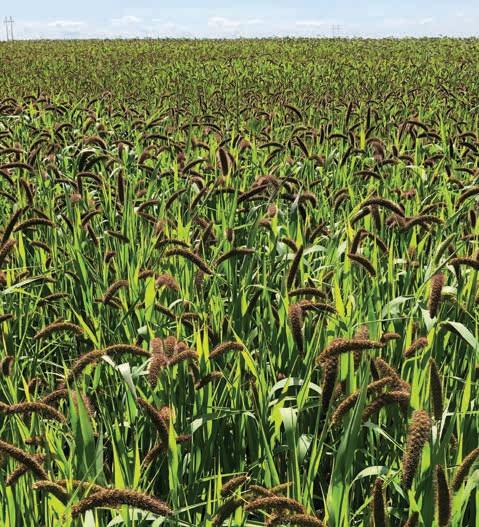
feed crops.” This class of forages loves heat, is drought tolerant, and has flexibility of use. I think it is easiest to break down these species by harvest method, so think of it like this: millet for hay, forage sorghum for silage, and sorghum sudangrass for any use.
There are quite a few types of millet, so we’ll break them down by a single-cut or multicut. Foxtail type millets are a single-cut, and they include German, White Wonder, and Siberian for varieties. German is a 60-day maturing, drought tolerant millet that tends to be very consistent for production each year.
White Wonder will be a bit taller and have slightly better feed quality but won’t have quite the drought tolerance. The fastest maturing millet is Siberian, but it will be shorter statured and lower yielding. These can be planted through the month of July and still have the potential to yield 2 to 3 tons of dry matter per acre.
Pearl and Japanese millet are the
two multi-cut millet options. Pearl is the best choice for the highest yielding millet with the best feed quality potential. It tillers extremely well and has a higher leaf to stem ratio than any other millet. Japanese should be placed on your flooded out acres where the soils are alkaline and the ground stays mucky. It won’t make great quality hay, but it’ll make high yields and grow where others struggle.
Forage sorghum should be planted on your acres where corn failed. It’ll tolerate many of the herbicides that were applied for your corn crop, and it loves that same fertility program. This is the go-to for a silage crop, so plant it in a wide row and make sure you have a growing season left for it to properly
mature. Most will need a minimum of 85 days to reach their maturity. There is potential to put up 15 to 20 tons of silage, and the feed quality will be slightly higher in crude protein, when compared to corn silage.
Sorghum sudangrass varieties are hybrids that can be chopped, hayed, or grazed. These fit in between a millet and forage sorghum for stem thickness and days to maturity, but they also have great tillering ability for re-growth options. If you have enough harvested feed but have acres available to plant that can be grazed, I’d use a BMR sorghum sudangrass to create additional fall/ winter grazing.
Planting anything back on acres that had a cash crop requires you to watch herbicide residuals. For the most part, there is an option for
most fields depending on the preemerge herbicide program. These emergency feed options can build a massive amount of feed inventory in a short window on acres that otherwise would sit idle. If you unfortunately find your farms in a bad weather situation, here is hope to make some feed!
Photos courtesy Renovo Seed learn more renovoseed.com
Renovo Seed, Brookings, S.D.
The team of folks at Renovo Seed have roots that run deep in farming, agriculture, and in the overall respect for the landscape. They opened their doors in 1987 and continue to walk alongside farmers, ranchers, and landowners across thousands of acres throughout the Midwest.

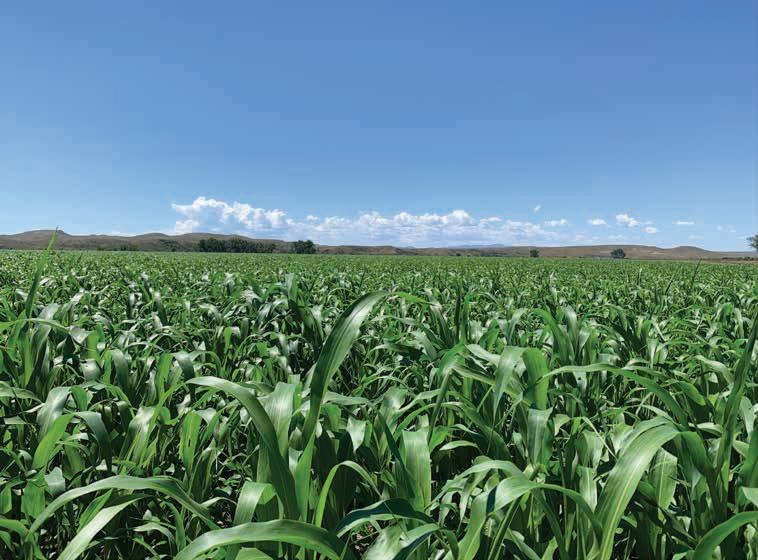







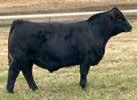


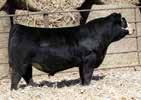



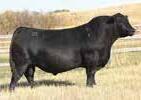
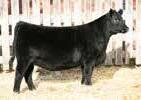
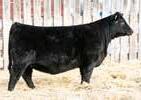
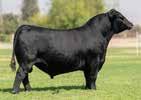



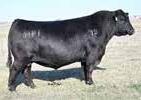

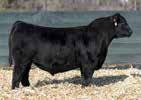
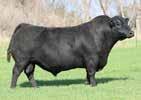

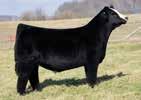


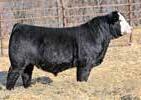


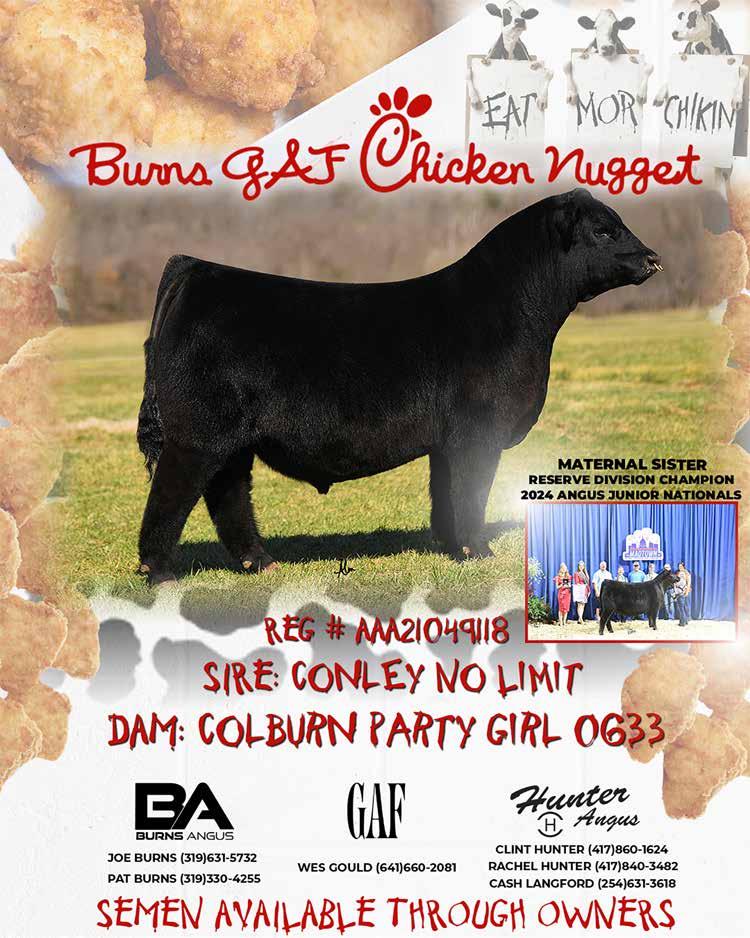






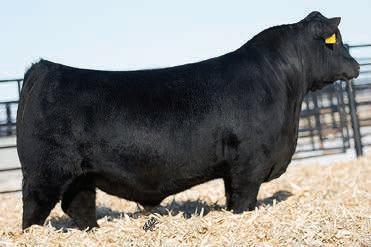

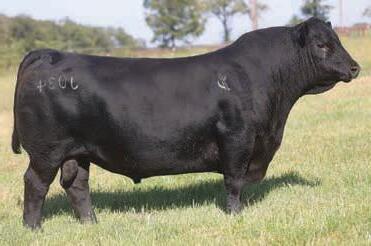


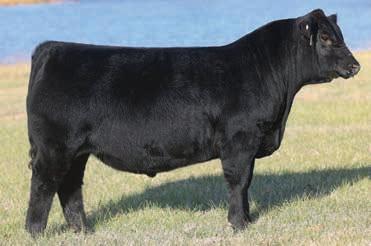

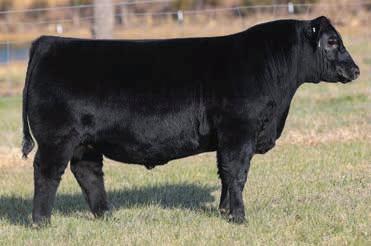




The Lowderman family’s cattle and auction companies forge family bonds and foster relationships.
Monte Lowderman often recalls a quote that’s motivated him since his teenage years. While attending the Illinois Agricultural Youth Institute (IAYI) decades ago, Monte heard a speaker reference the John C. Maxwell quote, “Find something you like to do so much that you would gladly do it for nothing; then learn to do it so well that people are happy to pay you for it”.
Monte embraced that adage as a youth and has carried it with him through adulthood. “I kept that quote with me and used it in many different cases, including my speech for getting elected to the National Auction Association Board of Directors,” Monte Lowderman explained. “I think for me, I found that. And with my brothers, Brent and Cody, they are doing exactly

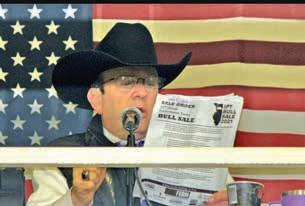
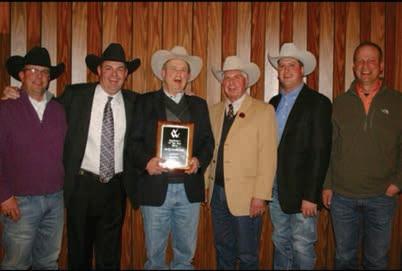

what they’re good at as well. We all try to do the best we can and pray that it all works out.”
Fortunately, it’s more than “worked out” for Monte and members of the Lowderman family. The fact is, they’ve discovered not just one passion turned profession but two. The Lowdermans own and operate a pair of nationally acclaimed businesses: Lowderman Cattle Co., a purebred Hereford operation, and Lowderman Auction and Real Estate. The Lowderman brothers work alongside their parents, Jack and Sherry Lowderman, who founded both enterprises near Macomb, Illinois.
The Lowderman family members make a dynamic team. The combination of their expertise and skillsets has transformed shared family interests into respected institutions. Lowderman Cattle Co. has produced multiple national champions and the operation’s genetics are known throughout the Hereford breed. The Lowdermans’ auction endeavors have place them in the national spotlight as well with headline making auctions and innovation in the online auction arena.


The current generations of Lowdermans attribute much of their success to the agricultural and entrepreneurial foundations laid by their parents, grandparents, and great-grandparents. The respect and zeal for the cattle and auction industries run deep in the family’s history.
In 1940, Sherry’s grandparents, Chet and Lucy Jennings, launched
Jennings Sales Co. in Macomb, Illinois. Their sale barn and auction business grew to be revered as one of the largest weekly livestock markets in the Midwest.
Sherry grew up around her grandparents’ sale barn, but it was her 4-H beef project that spurred her parents, Wayne “Smiley” and Betty Moore, to create a purebred Hereford operation. Her 4-H project evolved into Whispering Meadows Farm which served as the


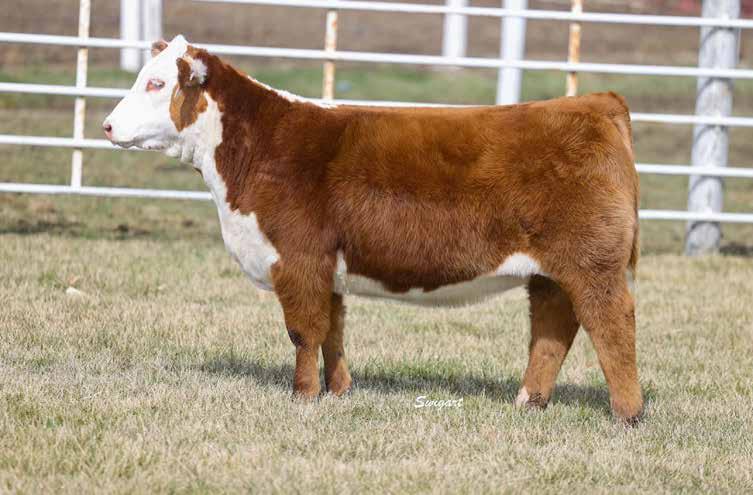

catalyst for Sherry’s lifelong love for Hereford cattle.
Jack’s parents, Wayne and Eloise Lowderman, operated a livestock trading and bull leasing business starting in 1942. Through their years in the cattle industry, Wayne and Eloise leased more than 7,500 bulls.
In the later years, when Jack was old enough to be an integral part of the business, Wayne and Jack traded more than 6,000 cows in one year alone. In 1963, Jack graduated auctioneering school and purchased Fairview Livestock Market.
Considering their shared devotion for
the cattle and auction industries, it probably comes as little to no surprise Sherry and Jack fell in love. The couple wed in 1966. Their wedding gift from Sherry’s parents - two purebred Hereford heifers. Thus, the next era of the Hereford business was born.
A year after exchanging wedding vows, Jack and Sherry formed a business partnership with Tommy and Trudy Williams, creating L&W Auction Service. The families worked together for more than two decades building an auction company with local, regional, and national clients. The evolution of the business included renting a former car dealership for offices and weekly auctions.
In 1982, the Williams family decided to relocate their part of the operation to Tulsa, Oklahoma. This marked the beginning of the Lowdermans’ own auction company. Jack and Sherry grew their auction company into a prominent business that now thrives with the leadership of their sons.

The Lowderman brothers honed their auction skills at an early age.
“The three oldest boys, we played sale barn at home. We had a little Fisher Price building, and we used old 2 by 4’s to make big pens, we pretended golf balls were cattle and marbles were pigs, then we auctioned them off,” Monte reminisced.
The Lowderman boys, Monte, Brent, Cory, and Cody immersed themselves throughout childhood in the rhythms of auction day, activities of 4-H, and busyness of the show barn. Appreciation and respect for people and agriculture radiated as a routine part of their lives.
The tight knit family is brought together by shared passions but also by tragedy. When Cory was 20 years old, he was in a devastat-

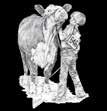
ing car accident. The injuries he suffered were so severe he passed away after being in a comatose state for nine years.
The first nine months after the accident, Cory was in a hospital far from home. Monte had just graduated college a year prior, yet despite his youth he stepped up in an im pactful way.
“Jack and I main ly were going back and forth concerned with being with Cory at the hospi tal at the time. And at that point, Monte




WEDNESDAY, NOVEMBER 13th

















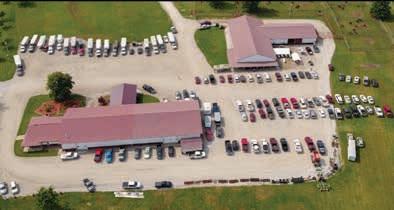
took over the auction business and kept the office open and booked the sales and got the office work done as well. So, we’re very appreciative that he dedicated himself to that during that time period,” Sherry Lowderman shared.
One of the many ways the family chose to honor Cory was through reinvigorating the family’s Hereford operation. “At Cory’s passing, we had a family meeting, and said, ‘How could we honor him and in what direction should this go?’ We were dedicated at that point to the Hereford business, and so we decided to invest in some major genetics at Michigan State’s dispersal sale. And that was the beginning of reestablishing the Hereford business in the family,” Sherry explained.
Since that family meeting more than two decades ago, Lowderman Cattle Co. has developed into a premier purebred Hereford operation. The Lowdermans manage a set of elite donors, offer a nationally recognized bull battery, and operate a robust embryo transplant program. The family hosts three online sales each year, showcasing show heifer prospects, herd bull and steer show prospects, and open and bred females.
At any given point in the day, one might stumble across three generations of Lowdermans working side by side in the show barn. No matter how chaotic their lives become, it’s the cattle that brings them together.
“We’ve enjoyed great success, but the best part is sharing all that as a family. When you have three generations in the show barn. It’s pretty special,” Sherry said.
The Lowderman brothers have come far from the days of pretending to auction golf balls (cattle) and marbles (pigs). Monte, Brent, and Cody each graduated auction school and with their combined efforts the auction company soared to new heights.
“We have sold everything starting with estate auctions and livestock markets evolving to include purebred production and bull sales, multimillion dollar equipment and real estate, as well as farm and ranch complete dispersals. We have been very blessed to have had done that on not only the local and regional level but the national level as well,” Monte stated.
Monte fondly recalls working
with his family and assisting the Williams family at auctions across the country for clients such as Skelly Oil Corporate Resort, Lockheed Martin and General Dynamics Research Facility, Rosharon Farms, Nine Bar Ranch, and Worrell Farms. One particularly memorable auction was a million dollar one-bedroom condo located one block from Trump Tower in NYC.
Many times, auctions are extremely long days with wake ups before sunrise and work until the wee hours of morning. The Lowdermans don’t mind, they are willing to do what it takes to help their clients.
“We understand that buying and selling real estate is one of the most important decisions people will make in their lifetimes,” Monte said. “In a lot of cases, our clients have spent a lifetime building their business and it’s darn important to them and they are hiring us to get as much money out of that as we can because it affects their quality of life. So, we work hard to do what is best for them and honor them,” he continued.
Sherry added, “In that same realm, our business has been built on reputation and referrals. We em-
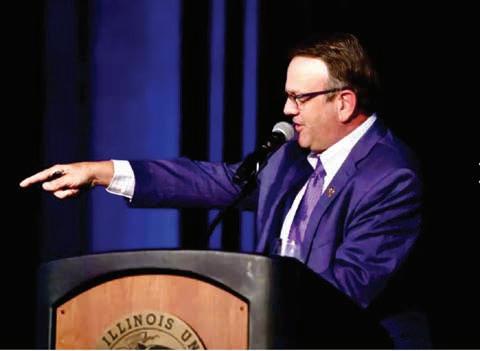

phasize honesty, integrity, and sincerity, and we combine that with an energetic presentation on sale day. And all of that, I believe, has contributed to our continued success.”
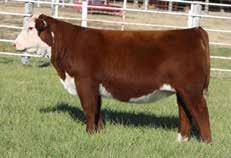
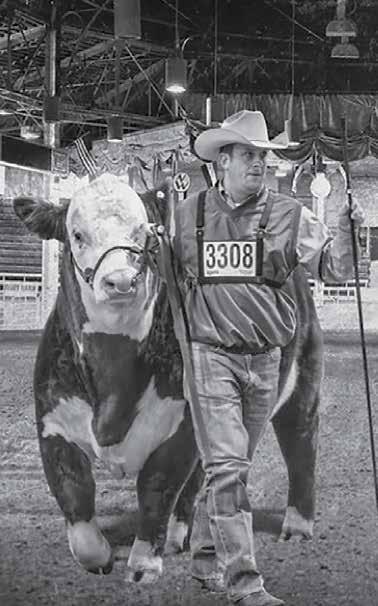

line auction bidding platform.
The family operates the auction business from a multipurpose facility and auction building west of Macomb, Illinois. The family added another building to the auction headquarters to accommodate increased sale volume and to create a venue for Lowderman Cattle Co.’s annual production sale.
While all three Lowderman brothers are deeply engaged in the auction and cattle business, each brings a unique expertise to the table. Monte primarily handles Lowderman Auction and Real Estate, Cody concentrates on livestock production and bull sales, and Brent leads the way in the livestock market as the owner and operator of Carthage Livestock Inc. in Carthage, Illinois. In addition, Monte and Cody sell real estate nationally.
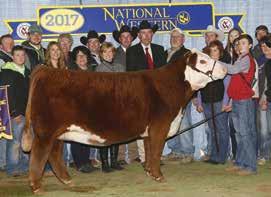
Similar to the generations before them, the Lowderman brothers are groundbreakers. Monte and Cody recognized the importance of offering an online auction platform for customers before most companies decided to get onboard with the concept. The two brothers formed Lowderman Auction Options in 2009. A few years ago, Monte and Cody merged their online auction business with AgSaleDay, an on-
From the earliest days, the Lowdermans’ deep roots in agriculture and unwavering dedication to their craft shaped the character of both enterprises. As the years unfold, each generation adds its own layer to the legacy – and for the Lowdermans, the greatest reward of all is sharing each moment with family. learn more lowderman.com
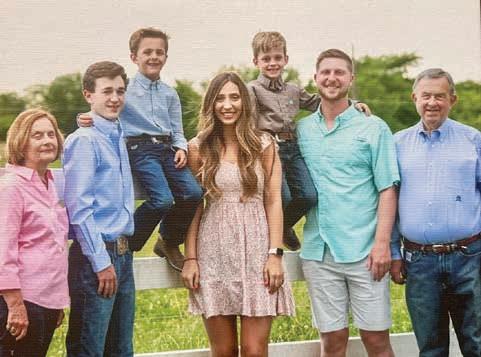
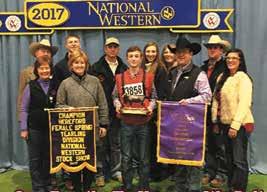

Sunday, October 12, 2025 1:00 pm, at the sale facility in Macomb, Ill.
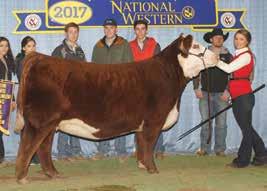




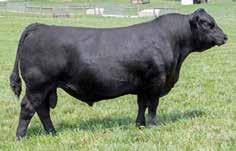




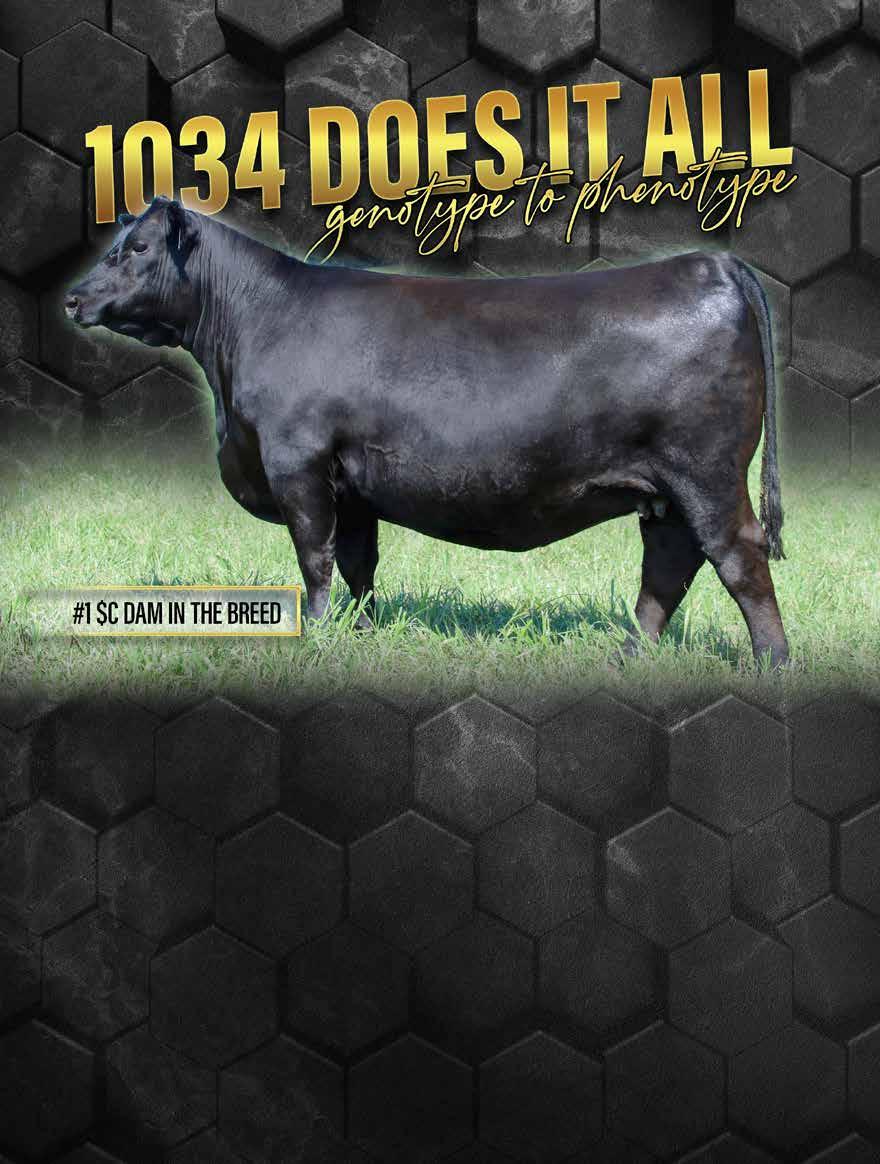


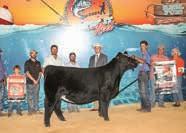

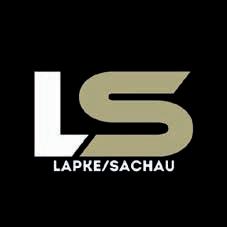


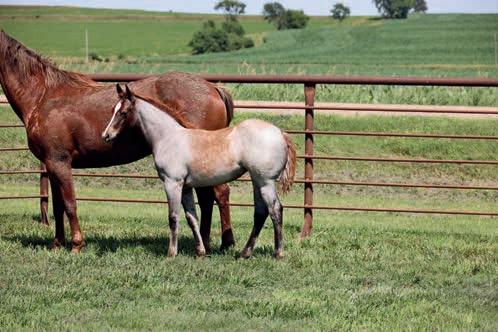
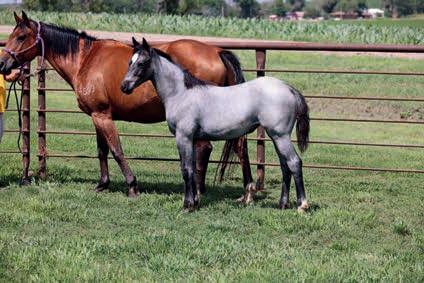






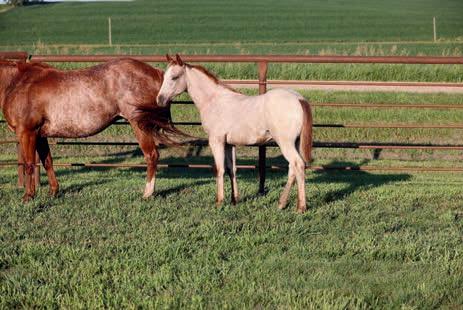
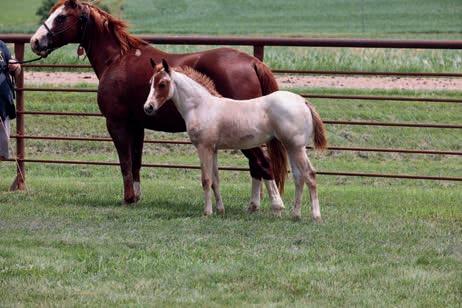





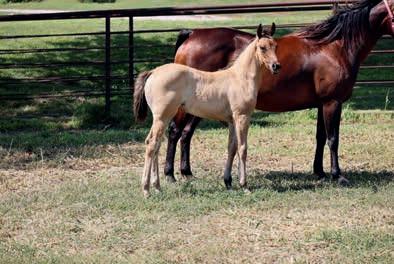
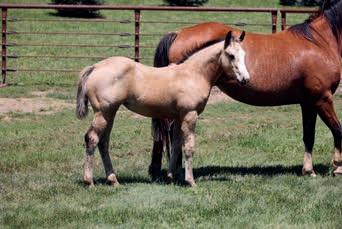
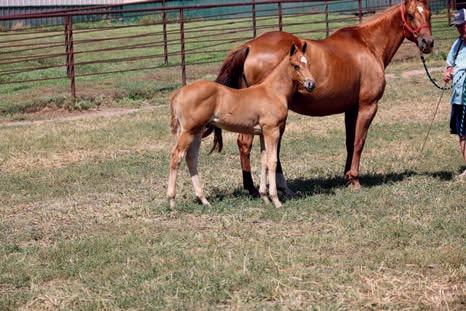
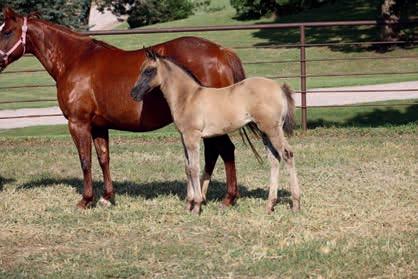


Health & Reproduction questions answered and explained.
contributed article by Dr. Vince Collison Collison Embryo and Veterinary Services, Rockwell City, Iowa collisonembryoservices.com
ecently I have found myself using the statement “Less is More” much more frequently. Bovine Respiratory Disease (BRD) continues to be a challenge for many even when implementing a full vaccination program. The wet weather this spring was also a challenge for early calving herds leading to many cases of BRD. With many of the affected herds using a comprehensive vaccine program, I am fairly convinced that failure of passive transfer is a larger problem in these herds than many realize.
Good passive transfer of antibodies at birth through colostrum is paramount to early calf health and leads to better health and performance of the calf as it grows out. To achieve the level needed, a calf should consume 300 grams of IGG antibodies as soon after birth as possible. The best absorption of antibodies is in the first two hours of birth.
It’s very critical for the calf to consume at least 100 to 200 grams of IGG within the first two hours to achieve the levels needed for good
health. After two hours, the ability to absorb antibodies will rapidly diminish and it will be much harder to reach the levels needed to maintain the calf’s health and will likely lead to failure of passive transfer. This is one area where I would not hesitate to intervene if the calf is not getting up and nursing soon after birth.
If you have to tube a calf, go ahead and give it the full dose of colostrum. Many producers worry that the calf will not nurse if they give the full two quarts of colostrum. My experience is that calves are programmed to nurse at birth and most of the calves will be up and nursing soon after receiving a
full dose of colostrum. And if they don’t get up right away, they will have received what they need for a good start.
Earlier calving in the winter months can also contribute to many of the problems associated with failure of passive transfer. When calves get chilled out, they will often lose their sucking reflex and have a harder time getting started. Also, if a calf gets chilled out, its ability to absorb colostrum is reduced. If a calf can consume colostrum right away or if the producer intervenes
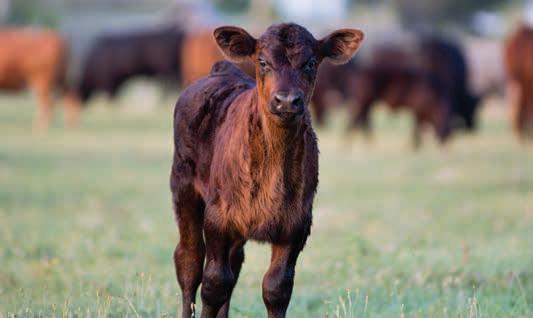
and tubes the calf with colostrum, the fats in colostrum will activate the calf’s brown fat and make it easier for it to thermoregulate itself in the colder temperature.
One other thing I have observed is that everyone wants to vaccinate the calf right at birth and I wonder if this contributed to the calf not nursing as much in the first 24 hours as it would have had it not been vaccinated right away. The fact that many of these calves will still get sick even after receiving vaccinations has us always looking for more answers, and observations in other herds has led to the conclusion that we need to really ensure that these calves get full passive transfer through colostrum at birth.
This past spring we had a client who was telling me that he routinely gives every calf that is born a half dose of commercial whole colostrum at birth. Which I found interesting, as his newborn calves don’t typically have any health issues.
In another client herd that calves through January and February, the owner had also tried giving a half dose of the same commercial whole colostrum to every calf at birth. He also stated that the calf health was as good as he’d ever had and will probably do it again. In both cases, they had stated that it is fairly expensive to do, but that they had been able cut out some of the other things they were doing plus had the added health benefits.
Most of what we see for pneumonia in the younger calves is bacterial, mostly being Histophilis somnus and Mycoplasma bovis. We also will see Pasteurella multocida and M. hemolytica as well, and all four bacteria usually in some combination. Viral infections have been less common in younger calves, but Corona virus seems to be the most common and is usually in some combination with a bacterial component.
The two most common bacteria that we see, Histophilus and Mycoplasma are fairly hard to vaccinate against. Vaccines that are available for both organisms are whole cell bacterins that won’t stimulate cell mediated immunity very well, thus making it harder to protect against them. Both of these organisms are slow growing and that makes treatment more difficult since antibiotics work to disrupt cell division.
Because these two bacteria grow slowly, the therapeutic levels of antibiotics won’t last long enough to fully treat in these cases and relapses are common. For these reasons, colostrum intake is critical to help keep the health at its highest and help prevent these infections naturally.
Another management thing to do includes getting pairs spread out once they are calved to reduce the spread of disease. This can be hard to do when calving in the winter and pairs often stay in a dry lot
situation, but calves will do better if they aren’t in as tight of quarters.
As far as vaccinating to prevent pneumonia in neonatal calves, we think it is important to focus on just using the vaccines necessary to control the issues that affect your herd. It’s pretty easy to get caught up in trying to vaccinate for every possible disease, but we need to remember that vaccination is not a non-event.
Vaccination can cause stress, and it takes energy for the calves to build immunity from the vaccinations. Also, we need to be careful not to blitz their immune system so severely that they don’t respond to any of the vaccines very well. It has been shown with infrared technology that Clostridial vaccines can really heat up at the injection site and calves vaccinated for Clostridium will lay around a lot more than non-vaccinated calves over the next three days.
These examples are the main reason we don’t like to give vaccinations in the first 24 hours after birth, so that vaccination stress is not compromising the calf’s ability to suckle frequently in the first day of life. After that first day it is important to tailor your program to prevent only the issues that affect your herd. Your herd veterinarian is best suited to help you develop a management and vaccination program for the targeted prevention of the issues you deal with most often.
learn more collisonembryoservices.com
Dr. Vince Collison is co-owner of Collison Embryo and Veterinary Services PAC in Rockwell City, Iowa.




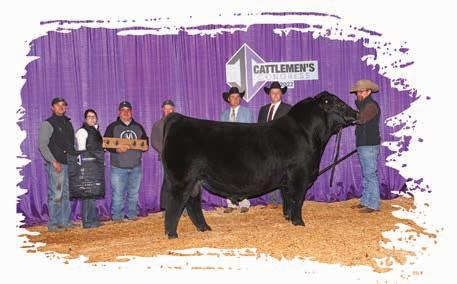






Carlson Farms
Rob, Ross, Reid, and Lane
Carlson Families - Murdock
vos cattle company
Ryan and Mallory Vos - Hadley (on display at Carlson Farms)
1883 herefords
Phillip and Shereen Hauge - Sunburg (on display at Carlson Farms)
Cardinal Creek Cattle Co.
Robert and Rochelle Orsten Family - Willmar
geislinger’s lakeview farm
Junior Geislinger Family - Watkins (on display at Cardinal Creek Cattle Co.)
Walsh farm, llc
Walsh Family - DeGraff
jmf herefords & simangus
Jared and Makayla Flower Family - Holloway
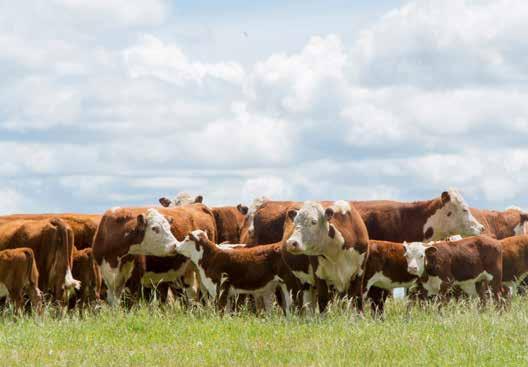
registration: 7:00 - 8:00 am @ Carlson farms 1470 10th St. NE, Murdock, MN 56271
®
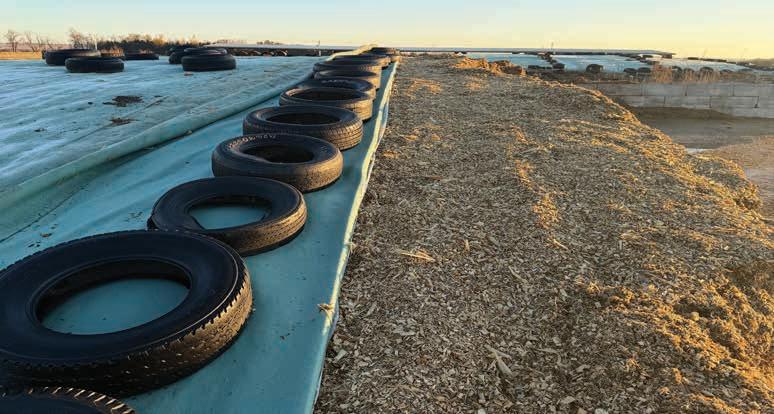


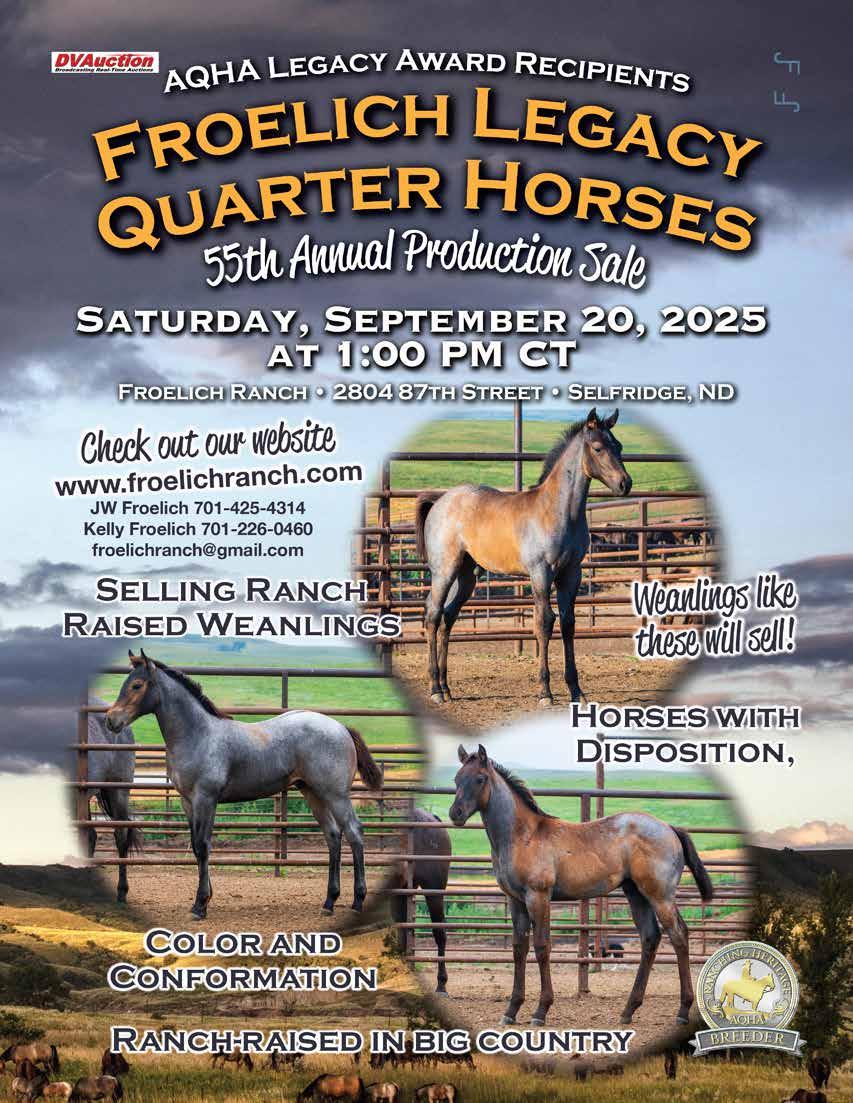
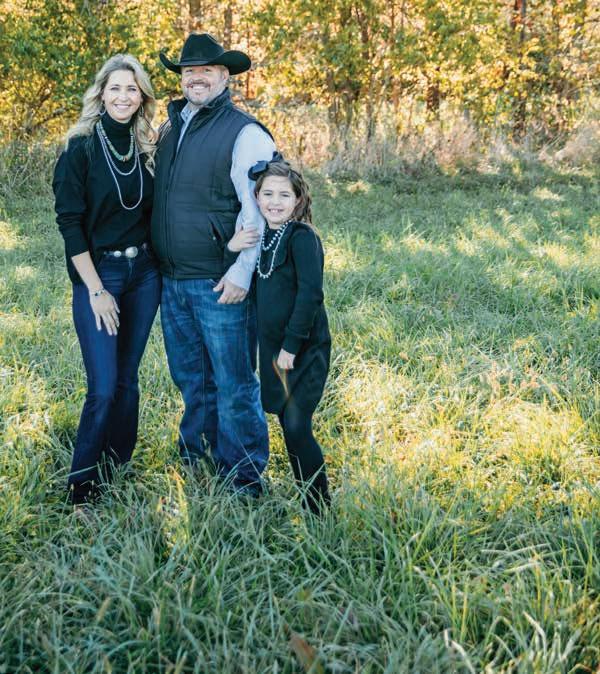
In the kitchen with

Our story began fifteen years ago when Tyler and I said, “I do.” Since then, we’ve built a life around our shared passion and our wonderful eleven-year-old daughter, Piper. Tyler carries on a rich legacy as a third-generation Shorthorn breeder, while I proudly established myself as a first-generation Angus breeder. Our marriage brought our two passions together, merging Cates Farms Shorthorns with Sunrise Sunset Farm Angus. Our operation is dedicated to producing and showcasing top-tier show cattle
What is your favorite cooking tip or trick?
My top cooking tip is all about planning and preparation. I always map out my meals for the entire week and then check to make sure I have every single ingredient on hand. This way, my grocery list is built directly around what I need, which makes shopping and cooking stress-free.
Where did you learn to cook?
I learned to cook from my mom, a true “from scratch” cook who never touched a box cake in her life. When I first got married, I practically had her on speed dial, calling with questions for almost every meal. Thankfully, my cooking has come a long way since then, and I now really enjoy exploring new recipes.”
Sunrise Sunset Farm, Cates Farms - Modoc, Ind.
What is your most requested dish or what is your favorite thing to make?
It’s hard to pick just one, as my “most requested” dish changes often with all the new recipes I explore! Currently, the crowd favorite is smash tacos, a fun and popular dish that was featured in a junior national cook-off contest.”
What is your least favorite job in the kitchen?
My least favorite job in the kitchen is definitely cleaning up. I’d bet that’s a pretty universal feeling!”
Cowboy approved recipes used by our favorite country cooks.


UPCOMING SALE: Saturday, August 30, 2025
At the farm near Modoc, Ind.
Cortney Hill-Dukehart Cates
2 lbs. ground beef, 75% lean, divided into 12 portions
2 tsp. coarse kosher salt
2 tsp. guajillo chili powder (or dark chili powder), divided
1 tsp. granulated garlic
1 tsp. granulated onion
1 tsp. bouillon concentrate (or 1 bouillon cube)

1 packet (5 grams) Sazon seasoning mix
½ tsp. cracked black pepper
2 tsp. hot sauce
12 corn tortillas
8 oz. shredded quesadilla cheese (or Monterrey Jack)
1 small white onion, diced
2 /3 c. chopped cilantro
Step 1: Prep seasoning and sauce. Combine salt, 1 teaspoon chili powder, granulated garlic, granulated onion, and black pepper to make taco seasoning; set aside. For sauce, bring 1 cup water to simmer; add 1 teaspoon taco seasoning, 1 teaspoon chili powder, bouillon, Sazon seasoning, and hot sauce. Stir sauce to dissolve ingredients; pour into squeeze bottle or glass measuring cup. Step 2: Smash. Roll each portion of ground beef (about 3 ounces each) into a ball; preheat griddle to medium-high. Place balls of ground beef on griddle, leaving plenty of room between each. (Note: sear in batches based on surface space.) Use a large spatula to smash each ball of ground beef extremely thin to a diameter slightly larger than a tortilla. Add some remaining seasoning on each patty, squirt each with about 1 tablespoon sauce. Top each with a tortilla. Step 3: Create taco. Once beef develops a deep brown crust, flip tortilla side down, making sure to fully scrape up beef and keep crust intact. Evenly top each beef patty with cheese. Once cheese melts and tortillas begin to crisp, top each patty with about 1 tablespoon onion and cilantro. Use spatula edge to press a crease down middle of each patty, fold tortilla over to form taco. Remove from heat; serve with remaining taco sauce.
Note: This is a recipe that I like to take liberties with and change up the ingredients. It tastes great every time!
16 oz. ground beef
1 yellow onion
4 cloves garlic, minced
1 T. Italian seasoning
24 oz. jar spaghetti sauce
16 oz. spaghetti noodles
16 oz. whole milk cottage cheese or whole milk ricotta

3 c. shredded whole milk mozzarella
1 ½ c. shredded Parmesan cheese
¼ c. heavy cream
Kosher salt fresh cracked pepper
Step 1: Preheat oven to 350 degrees Fahrenheit. Cook pasta 2 minutes less than the package directions recommend. Toss with olive oil and season with salt and pepper. Step 2: While the pasta is cooking, brown ground beef in a large sauté pan over medi- um-high heat. Reduce heat to medium and add onion, garlic, and Italian seasoning along with a couple pinches of salt and pepper. Cook, stirring frequently for about 4 minutes or until the onions become translucent. Add pasta sauce and stir to combine. Sea- son to taste with salt and pepper. Step 3: In a large bowl, com- bine spaghetti noodles, cottage cheese/ricotta cheese, half the mozzarella, half the Parmesan, heavy cream, and a couple large pinches of salt and pepper. Use tongs to toss the ingredients together. Step 4: Lightly grease a 9x13-inch baking dish and transfer the spaghetti mixture to the pan. Spread spaghetti in an even layer. Top pasta with meat sauce. Then add the remain- ing mozzarella and Parmesan cheese. Step 5: Tightly cover the pan with foil and bake for 40 to 50 minutes or until the pasta is warmed through, the cheese is melted, and the edges of the pasta are bubbling. Broil for 1 to 2 minutes if desired to brown the cheese. Let rest for 5 to 10 minutes, then cut into slices. Garnish with Parmesan and fresh chopped parsley and enjoy!

1 ½ lbs. top-round steak
1 ½ c. all-purpose flour
1 tsp. kosher salt
1 tsp. black pepper, freshly ground
1 tsp. paprika, not smoked ¼ tsp. cayenne pepper
3 eggs beaten
½ c. whole milk
vegetable oil for frying
Cream Gravy:
2 T. vegetable oil
2 T. all-purpose flour
2 c. whole milk
black pepper freshly ground to taste
kosher salt to taste
Step 1: Cut the top-round steak into four even pieces. Use a meat tenderizer to pound the beef with the spiky end. Hit every square inch on both sides multiple times until the meat is quarter-inch thick. Season both sides with kosher salt and black pepper. In a large skillet, heat a half inch of vegetable oil to 300 degrees Fahrenheit. Step 2: Mix the flour, kosher salt, black pepper, paprika and cayenne pepper together in bowl. Then transfer the mixture to an 8x8-inch or 9x13-inch pan. Step 3: In a medium bowl, beat the eggs then add the milk. Stir to combine. Pour the mixture into a second 8x8-inch or 9x13-inch pan. Step 4: Dip a piece of beef in the flour mixture and coat both sides. Then, carefully dip both sides of the beef in the egg mixture and then back into the flour mixture. Coat the remaining pieces of beef. Step 5: Gently place one or two pieces of beef into the hot oil. Don’t overcrowd the pan. Cook for 3 to 4 minutes until golden brown. Use tongs to turn the pieces of beef over and cook the other side for another 3 to 4 minutes until golden brown. Remove the beef and drain on a paper towel. If cooking multiple steaks, keep them warm on a wire rack in a 200-degree Fahrenheit oven. GRAVY: Step 1: After the beef is all cooked, carefully pour off the hot oil into a heat proof bowl. Retain any brown bits in the skillet. Add 2 tablespoons of the hot oil back into the skillet and heat over medium-low heat. Add the flour to the skillet and whisk continuously for 2 minutes until the mixture turns golden brown. Step 2: Add the milk and stir to combine. Cook until thickened, about 2 to 3 minutes. Add salt and pepper to taste. Note: Cream gravy needs a lot of salt.


H
H
H
H
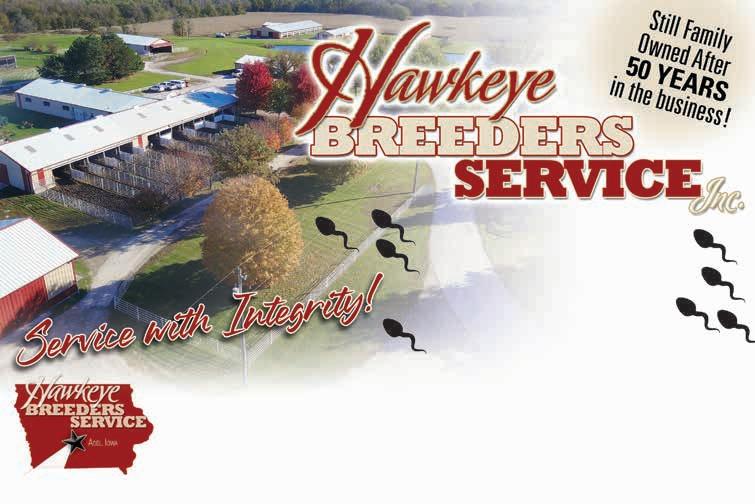

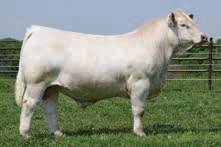


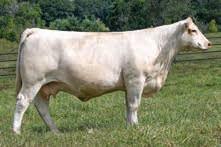

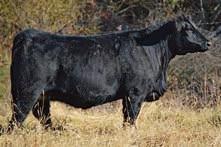

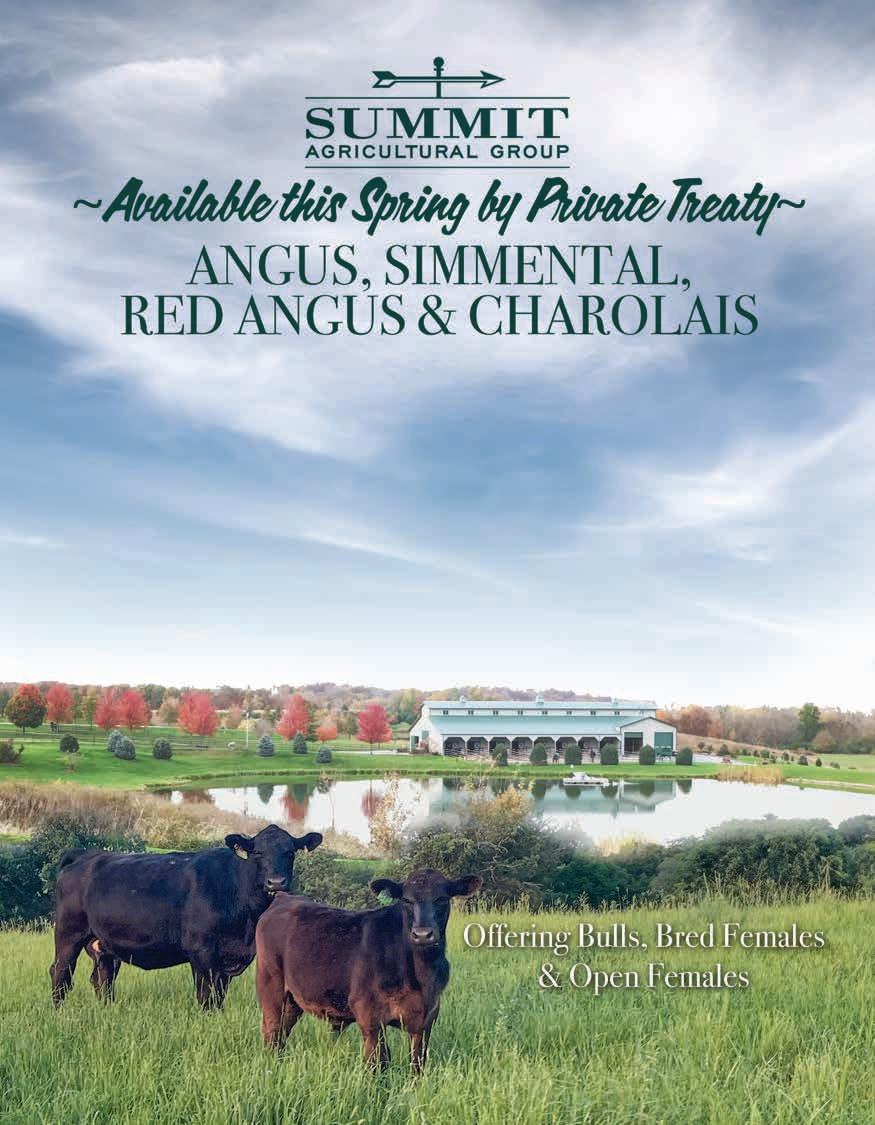
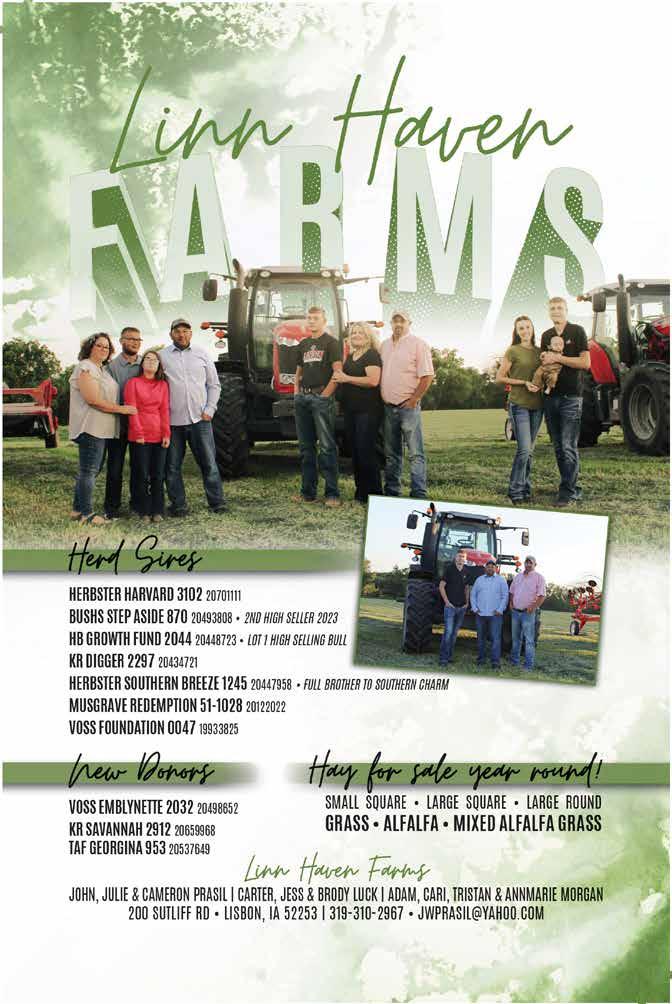
Members of the Missouri Limousin Breeders Association have had a busy spring and summer with events such as the 20th Annual American Pie Sale, MLBA Dinner, Banquet and Benefit Auction and Missouri Field Day. The Gravel Bar at Sand Spring Resort in Lebanon, provided the backdrop for food, fellowship, fun and of course tremendous Limousin and Lim-Flex cattle. Furthermore, we are proud of the Missouri Juniors that exhibited cattle this summer at Junior Nationals in Perry, Georgia. Join the ranks of an association that’s On The Move.
JULY 25
Ozark Empire Fair Junior Show, Springfield
JULY 26
Ozark Empire Fair Open Show, Springfield
AUGUST 15
Missouri State Fair Junior Show, Sedalia
AUGUST 16
Missouri State Fair Open Show, Sedalia
OCTOBER 13
American Royal Junior and Open Shows, Kansas City
OCTOBER 18
Linhart Limousin Fall Production Sale, Leon, IA
OCTOBER 27
Buck Ridge Cattle Co. Fall Bull & Female Sale, Seymour
NOVEMBER 8
Edwards Limousin Private Treaty Sale, Higginsville
NOVEMBER 13
Misty Morning Fall Spectacular Sale, L365 Auctions
DECEMBER 18
Glendenning’s J Bar J Holiday Classic Sale, L365 Auctions

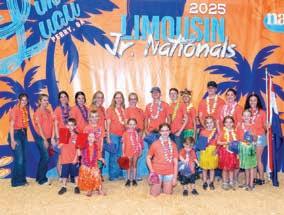
LARGE STATE HERDSMANSHIP
2025 National Junior Limousin Show & Congress
Congratulations to the Missouri Juniors at the National Junior Show Showmanship competition
6th - Eillie Dill, Intermediate 9th - Max Rost, Intermediate Champion - Kharis Wilson, Novice 7th - Gabriel Minor, Novice

Members of MLBA gathered at the Gravel Bar at Sand Spring Resort for the 20th Annual American Pie Sale, MLBA Dinner, Banquet and Benefit Auction.
2025 ED PINEGAR
MEMORIAL SCHOLARSHIP
Kelsey Morris, Jillian Mudd & Austin Hunt
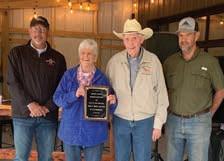

For More Information on Limousin and Lim-Flex Cattle Contact:
For more information or to find a breeder in your area, visit our website: www.missourilimousin.com
contributed article by Kirk Lynch
A review of the current cattle market.
ell, I hope everyone has had a fun-filled, eventful summer. My family and I sure did. Between cattle shows, a trip to Yellowstone, the county fair, and everyday life we sure have had a summer to remember which included some fireworks on the Fourth of July. However, those fireworks are nothing compared to what has been happening to the cattle market.
Every aspect of the market is setting record highs and to think that the summer months are generally the lowest market of the year but with tight supply and solid demand at the meat counter we are seeing the opposite.
The fat cattle market seems to be getting higher by the day. As I typed this article, we are seeing some cattle go through the ring bringing in the high $2.40’s while most cash prices in the country in the Corn Belt are inching towards the $2.40 mark. By the time you read this article, I believe that we will have seen some fat cattle bring over the $2.50 mark in the barns and possibly be close to seeing some bring that in the country.
The slaughter bull and cow markets are setting all-time highs as well. High-yielding bulls bring
well north of the $2.00 level and high-yielding fat cows are not much behind them. Even though cow herd numbers are low, I would look for cow/calf operations to be culling any cow or bull this fall that gives them a reason when the salvage value is so high.
Feeder cattle are worth their weight in gold currently. With feed and commodity prices staying in line and the continuing climb in cash and board fat cattle prices you hear of a new high in the feeder market just about every day.
Breeding stock also is setting alltime highs. Last week a guy decided to sell his commercial cow herd of about 15 pairs ranging from young to broken mouth. He averaged over $4,000/ pair. Seeing some fall calvers moving and depending on the age and kind they are bringing $3,200 to $4,500.
You can say things are sure all
sunshine and rainbows in the markets right now. But someday it will go the other direction, I don’t see it anytime soon but someday. Wishing everyone a fun-filled state fair season, enjoy the rest of summer and look forward to an eventful fall.
Kirk Lynch, Lineville, Iowa Kirk and his wife, Mary, own and operate Heartland Simmentals in northeast Iowa. Their seedstock operation consists of 500 registered Simmental and Angus cows. Kirk has years of experience backgrounding and feeding cattle as well as monitoring the cattle market. Kirk and Mary have four children: Gabrielle (11), Brayden (9), Vivian (7), and Bianca (4).


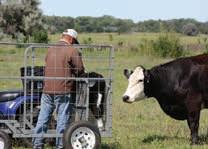



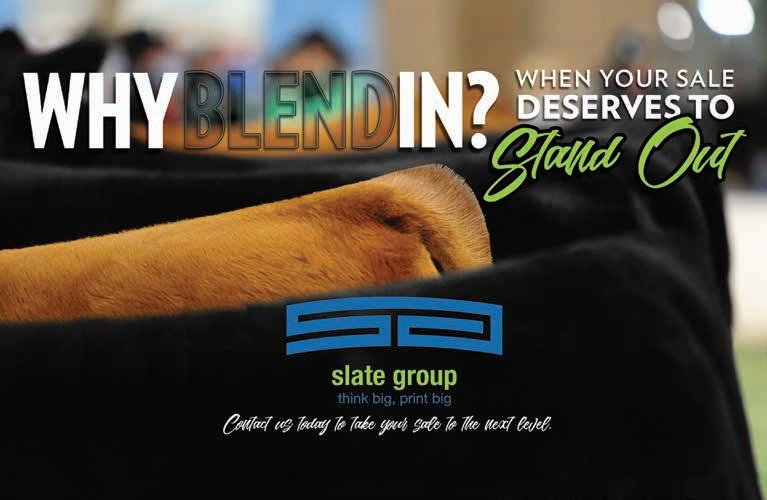
An ambitious group of Angus breeders, from across the globe, attended the 2025 Beef Leaders Institute, spending a week learning about the beef supply chain.
The topic of the week was “from pasture to plate” as 23 Angus breeders left their cattle operations to spend five days looking at the big picture of the cattle industry as part of the annual Beef Leaders Institute (BLI), hosted by the American Angus Association® in collaboration with Certified Angus Beef and the Angus Foundation.
Closing the gap between producer and consumer can seem like a daunting task. However, BLI aims to help bridge the gap between producer to consumer by immersing attendees in all aspects of the beef industry. Each year participants leave with a better understanding of how their operations and efforts help deliver high-quality beef to families’ tables across the globe.
“It was a great experience to be able to see the whole industry,” said Kelsey Stabler, BLI 2025 attendee. “So much of our time is spent out in the field. It was nice to finally see on such a large scale, the pasture to plate process.”
Stabler is a fifth-generation farmer in Montgomery County, Maryland. Stabler works alongside her family on their 2,500-acre farm as they grow corn, soybeans and wheat and raise 120 Angus cows. Montgomery Country is located just one county north of Washington, D.C., providing Stabler with the opportunity to connect with consumers. Her family hosts many tour groups to learn about farming and cattle.
The BLI group began their jour-

ney at the Association’s headquarters. The week kicked off with a welcome and discission surrounding industry trends and topics. Attendees learned what opportunities and services are available to them as members of the Association, no matter the size of their herd.
The group then set out on a cross-country trek across six states, making stops along the way at Tyson Fresh Meats beef packing plant in Dakota City, Nebraska and Sioux City, Iowa; Weborg Feeding Co. LLC in Pender, Nebraska; Buckhead Meat and Seafood in Northwood, Ohio near Toledo; STgenetics in Tiffin, Ohio; and a Meijer retail store in Wooster, Ohio. Their final destination, the Certified Angus Beef headquarters – also located in Wooster, Ohio – put its final touches on the group’s snapshot of the beef industry.
While the knowledge and insights gained were plentiful, attendees were able to see each aspect of the industry from a hands-on, up-close perspective. The relationships and connections formed from a week on the road were priceless.
Reflecting on tour stops, Stabler said, “To be able to make those connections with people who are out there, promoting us and helping us get to that next level of what we do for a living every day is just invaluable, and I can’t thank them enough.”
The 2025 group represented farmers and ranchers from across the globe with representatives from 15 states, two Canadian provinces and even one attendee from Australia. While attendees spent long hours on the bus traveling between their destinations on their tour of the beef industry, they had time to create lasting friendships.
“These are relationships that we will take into the rest of our lives,” Stabler said.
Each BLI attendee brought a unique perspective and background to the group. Some came from generational operations or are owners of genetics and reproduction companies, and others run farm-to-table beef programs. All provided unique insights into their experience in sectors of the industry.
“I think the best thing has been

(continued...)
getting to know other breeders and the different challenges that others face,” said Allison Dubs, a third-generation Angus breeder from Montana. “We have a huge variety of different producers on the trip, so everything from seedstock to small processors; so it’s been really cool to see how the Angus breed and Certified Angus Beef ® brand intertwine together between different people.”
The annual event is hosted by the American Angus Association in collaboration with Certified Angus Beef brand and the Angus Foundation. Programs like BLI exemplify the current leaders within the Angus breed, along with showcasing the bright future ahead.
While this year’s attendees have returned to their operations, they arrive home with more than just knowledge of the pasture to plate chain, but the security in knowing that they have gained friendships within the Angus family that will last a lifetime. While they spent the week painting a beautiful picture of the beef industry, it’s this network, these connections and friendships that show the heart of the cattle industry.
Beef Leaders Institute Class of 2025:
Jamie Wolf, South Dakota
Seth Christensen, Idaho
Hank Wonnenberg, South Dakota
Hays Gottwald, Virginia
Kelsey Stabler, Maryland
Ethan Tanner, Virginia
Zach Moffitt, North Carolina
David Knighton, Georgia
Brandon Richard, North Dakota
Avery James DeMello, Montana
Curt Houk, Iowa
Kenadee Barnitz-Merrick, Missouri
Jake Phillips, Australia
Nathan Isakson, Missouri
Alli Hall, Ohio
Maguire Blair, Canada
Zach Clodfelter, Texas
Allison Dubs, Montana
Matthew Deacon, Virginia
Bailey Quam Schultz, Wisconsin
Dakota Townsend, Canada
Jarod Creasy, Georgia
Reid McGuire, Alabama
Programs like BLI are built to showcase and connect current leaders within the Angus breed. Applications for the 2026 Beef Leaders Institute will open in late fall to Association members ages 25-45.
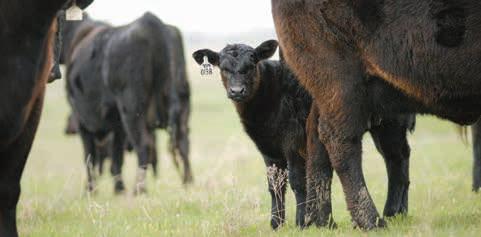
Established as a 501(c)(3) organization in 1980, the Angus Foundation remains focused on its mission to support Angus education, youth, and research. The organization has distributed more than $4.9 million in youth scholarships since 1998 and has also invested more than $1.4 million in beef cattle research in the past decade.
-Written
by
Ashlyn Murdock, Angus Communications Intern
Alongside annual genetic evaluation updates, the American Angus Association® releases three new maternal EPDs to help characterize functional longevity and udder quality in Angus cattle.
The cow is a cornerstone of any successful ranching operation, and Angus females have proven themselves to be reliable, consistent producers. Their merit is reflected in the population of the U.S. cow herd, which is now more than 80% Angus influenced. Producers have spent years selecting cattle with not only good maternal strengths, but those who exemplify the best of the Angus breed.
“We’ve always bred for cows,” said Mark Nikkel, owner of Mill Brae Ranch since 2018, and herd manager since 1987. “The bulls pay the bills and keep you in business, but there’s got to be a cow first.”
Now, Nikkel and other Angus producers can be even more confident in selection decisions made in pursuit of maternal merit. The American Angus Association® released three new maternal expected progeny differences (EPDs) on
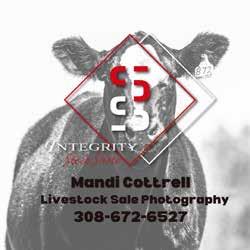
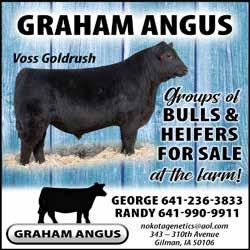


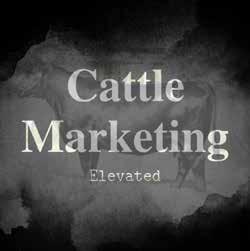







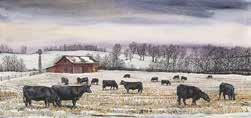
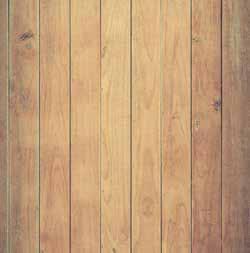

(continued...)
Friday, May 23, alongside annual updates to the genetic evaluation — Functional Longevity (FL), Teat Size (Teat) and Udder Suspension (UDDR).
Developed by Angus Genetics Inc. (AGI®), the EPDs offer consistent characterization of the traits across the entire registered Angus population, which will cut down on the research time Nikkel’s wife, Janice, has invested each year to find the right genetics for their herd. The couple began tracking udder quality on the Maple Hill, Kansas operation more than a decade before the Association formalized a scoring guide in 2021.
“The teat size and shape is so important to us as we calve... Age plays into this as well; that’s where the longevity piece comes in,” Janice explained. “When you have a 3-year-old that shows a decline in udder quality, they’re not going to be here very long. Now we’ve wasted a lot of time and money to produce this high-quality animal to send her down the road, and that makes no sense.”
This is a sentiment that Esther Tarpoff, director of performance programs for the Association, hears.
“We’re excited to move these EPDs into full production, enabling weekly predictions of the traits,” Tarpoff said. “This advancement enhances the ability of Association members and, more importantly, their commercial cow-calf customers to select for cow survivability and lifetime productivity — an area that has been missing from the Angus genetic toolkit until now.”
Following a dispersal of the original Mill Brae herd in 2018 and a brief break from raising seedstock, Mark and Janice made the decision to purchase back several founda-
tional females that were still in production at other operations to reestablish their registered Angus operation. They made the commitment, at that time, to enroll in the Association’s Inventory Reporting program to earn MaternalPlus® distinction, and submit their historic teat and udder data. The two initiatives gave the Nikkels access to the three research EPDs.
“I used those spreadsheets, and I know they are just research EPDs; but I am so thankful I had access to them,” said Janice. “If an individual bull that we were looking at didn’t score well in the longevity, teat and udder categories, he went off the list... it takes too long to overcome [challenges with] those types of traits.”
The FL EPD aims at improving the cow herd by increasing the number of calves a female can produce over her lifetime. The Inventory Reporting program and the commitment made by enrolled members was crucial to the ability to characterize this trait. As a whole herd reporting system, Inventory Reporting and its second tier, MaternalPlus®, tells a more complete story about a herd and its females. Every year, each female is reported to have a calf, a reason code for not having one or a reason code for culling. This allows for more complete data to be quantified and used to predict the number of calves a female (or daughters of a sire) is expected to produce by six years of age.
“With the use of technology like genomics, we are turning generation intervals faster than ever,” said Kelli Retallick-Riley, president of AGI®. “Traits like udder quality or lifetime production records take time to collect; producers will be able to utilize the FL, Teat and UDDR EPDs as risk mitigation tools, especially in today’s fastpaced genetic landscape where an A.I. sire may no longer be actively
marketed by the time his daughters reach full production.”
Along with the release of the three new EPDs, the Maternal Weaned Calf Value ($M) and Combined Value ($C) indexes have been updated to include the new traits. The release of these maternal tools ran alongside annual evaluation updates to the economic assumptions used in the indexes as well as updates to the models for the Heifer Pregnancy (HP) EPD and feed efficiency. Annual genomic score updates, which have typically coincided with the annual update and the release of the 2025 Fall Sire Evaluation Report, were released on June 27. Producers interested in learning more can find a detailed breakdown of the updates at Angus.org.
— Written by Jessica Hartman, Angus Communications
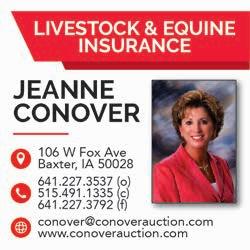
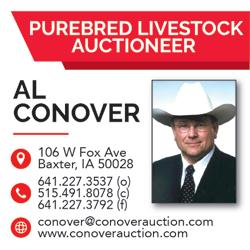


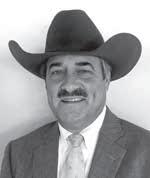
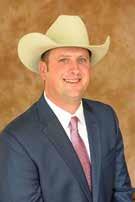

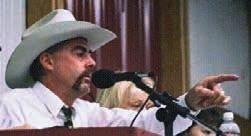




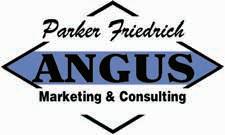
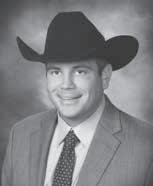

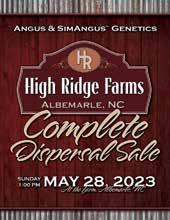
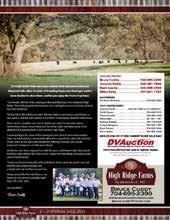

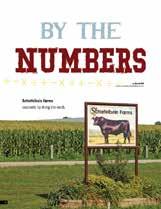
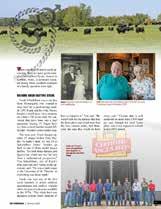
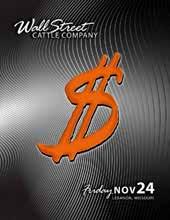





605 Sires & Donors
Alpha Syndicate
Behlen Country
Berg’s Shorthorns
Blue Lake Plastics
BritAmerica Mgmt. Group
Burns Angus
Cates / Sunrise Sunset
Cattle Visions
Circle M Farms
CJ Brown Studios
Collison Angus
Collison Embryo
Conover, Al
Conover, Jeanne
Crawford, Scott
CSL Auctions Inc.
Decorah Sales Commission
Fawcett’s Elm Creek Ranch
Focus Marketing Group
Friedrich, Parker
Froelich Legacy Quarter Horses
Gilchrist, Kyle
Gold Buckle Cattle Services
Graham Angus
Gutwein Angus
Hawkeye Breeders
IA Angus Tour
Integrity Stock Shots
J.J. Scheckel Angus
Johnson Cattle
Kleve Cattle Co.
Knudsen Cattle
Krogman Quarter Horses
Landgren Ranch
Lapke/Sachau Quarter Horses
Layton, Dustin
Linn Haven Farms
Linz Heritage Angus
Lowderman, Monte
Lowderman
MO Limousin Breeders Assn.
Next Generation Female Sale
Oakdale Farms
Rawhide Portable Corral
Raymond Sutton Ranch
Renovo Seed
Safety Zone Calf Catchers
Schooley Cattle Co.
Sealpro Silage Barrier Films
Slate Group
Stockman Design Services
Summit Ag Group
Sunrise Sunset / Cates
The Judge Source
TN Angus Field Day
Voss Angus
Wall Street Cattle Co.
Weishaar, Seth
Wilks Ranch
Y-Tex Corporation
ZWT Ranch


About the Stockman.

I am Chad Morrissey from Darlington, Wisconsin, where I live with my wife, Melanie, and two kids, Trey and Madyn. I am the herd manager at Gutwein Angus which has farms located in Francesville, Indiana and Darlington, Wisconsin. We are a purebred Angus operation that specializes in performance driven genetics with a focus on balanced phenotype and EPD projected cattle. I have been raising Angus cattle for 20 years and now assist the Fred Gutwein family with their endeavor to bring superior Angus cattle into the marketplace for breeders around the country.”

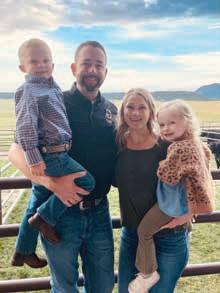
Which animal (any species) has left the greatest impact on you?

There have been many great bulls and donors that have left a huge impact on me, but I would have to say the most outstanding cow I’ve ever had the privilege of taking care of was the original 305 donor. She was the mother of the great RB Lady Denver 305 - 453, and many others. I will never forget her stature and presence. She was the type of female that you could throw any type of genetics at and she would always add muscle power and value.”
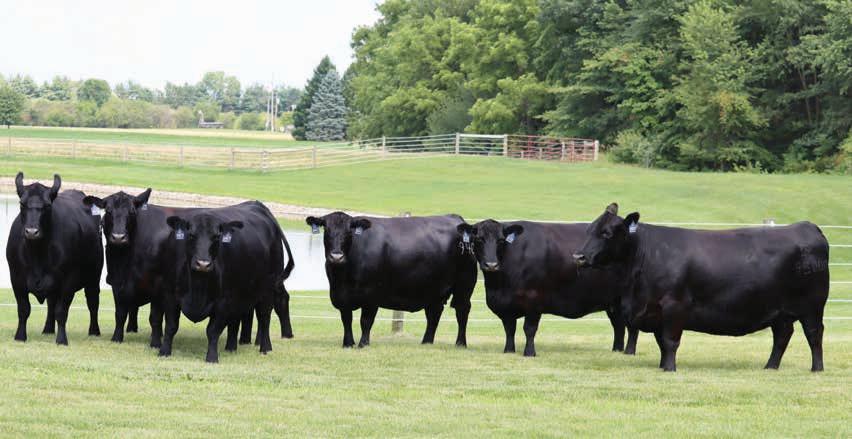
A conversation with everyday Stockmen,
Gutwein
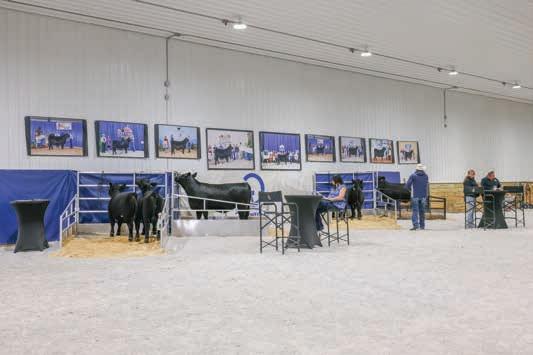
The most important lesson you’ve learned in this business?

The greatest lesson I’ve learned from this business is, it does not always matter how great of a product you can create, unless you have relationships to share it with. I have traveled the country and seen great cows everywhere, but if you don’t get off the farm and build relationships with other breeders, that product will only exist where it was created.”
What is the most important part of your farming operation?

I would say the most important part of our farming operation is the crew that I have and rely on every day. I spend a lot of my time traveling and visiting with breeders and overseeing our operations at home, but without the commitment of my crew those efforts would be pointless.”
What is your least favorite job on the farm?

My least favorite job on the farm has always been the day spent in the office. We all know as Angus breeders that it takes time to enter data and it’s always on my mind that there’s many other things I would rather be doing.”
Your go-to sorting apparatus?

I would have to say with cattle the best apparatus is always time. If you can plan ahead and get cattle to come with you with grain, I always figure it is better to lead than chase. Nothing good ever happens when you are in a hurry.”
Your favorite non-farm activity to do in your free time?

I would have to say I enjoy a good round of golf with some friends or spending time at a cattle show. I am fortunate to have a job that I have because most things I enjoy outside of family I get to do on a day-to-day basis.”
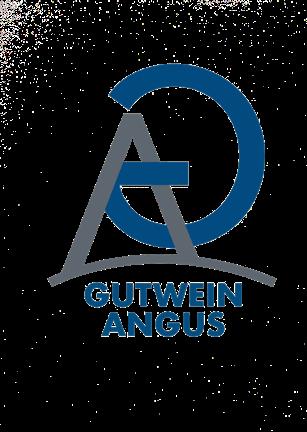
UPCOMING SALE:
Saturday, September 6, 2025
At the sale barn in Francesville, Ind.
Describe your worst day.

The worst day on the farm is always a day off the farm. As I travel to sales and do herd visits, there always is excitement on your way there or sharing someone else’s sale day, but it is the travel day home where you can’t wait to see your family that is my least favorite.”
What about the beef cattle industry excites you the most?

The thing that excites me and drives me the most about the beef industry is the challenge to create the next generation of genetics that have balance of phenotype and EPD projections. It’s important to not single trait select cattle and if there is one thing I could be known for, I would hope it would be the balance and quality I have created.”
learn more gutweinangus.com
